Jack Ross's Blog, page 8
February 1, 2023
My Favourite Vintage Bookshops: Auckland CBD
 Isabel Coixet, dir.: The Bookshop (2017)
Isabel Coixet, dir.: The Bookshop (2017)Despite its stellar cast - Emily Mortimer, Bill Nighy, Patricia Clarkson - and all its undoubted felicities of setting and atmosphere, I'm not sure I'd see The Bookshop as an entirely successful movie. It's a bit too depressing, for a start.
In fact, from my own (admittedly selfish) point of view, its main virtue was awakening me to the existence of Penelope Fitzgerald's writing.
•
 Jason Books
Jason BooksJason Books
[16 O'Connell St, Auckland CBD]
So, sure enough, next time I was in town I dropped into that home-away-from-home which is Maud Cahill's Jason Books, only to discover - surprise! surprise! - a biography and a collection of letters by the author in question waiting to find me:
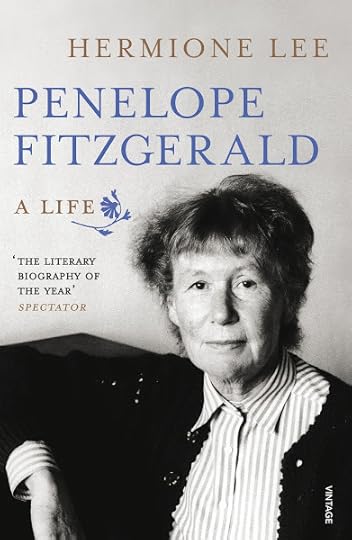 Hermione Lee: Penelope Fitzgerald: A Life (2013)
Hermione Lee: Penelope Fitzgerald: A Life (2013)Hermione Lee. Penelope Fitzgerald: A Life. Chatto & Windus. London: Random House, 2013.
Reading Hermione Lee's account of her has certainly helped me to understand why Fitzgerald's work tends to fix itself in the memory, and indeed reads like a memorial for an entire era of damp, seedy, post-war British misery.
Oh dear. I'm not really selling it, am I? But then maybe that's the point. Despite that one, career-defining moment when she won the 1979 Booker Prize for her novel Offshore, Fitzgerald's life was pretty short on triumphs and long on endurance.
After a fairly glittering start at Oxford in the late 1930s, an unfortunate marriage to wartime hero and peacetime drunk Desmond Fitzgerald provided the entrée to a couple of decades of poverty in ever more squalid surroundings.
Her star-studded family, the Knoxes ("she was the daughter of Edmund Knox, editor of Punch , and ... a niece of the theologian and crime writer Ronald Knox, the cryptographer Dillwyn Knox, [and] the Bible scholar Wilfred Knox") seem scarcely to have noticed, being far too preoccupied with their own glittering careers to pay much attention to this lone female in the ranks.
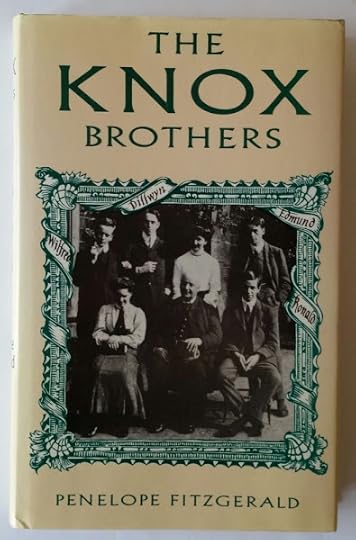 Penelope Fitzgerald: The Knox Brothers (1977)
Penelope Fitzgerald: The Knox Brothers (1977)Penelope Fitzgerald. The Knox Brothers: Edmund ('Evoe') 1881-1971, Dillwyn 1883-1943, Wilfred 1886-1950, Ronald 1888-1957. 1977. Newton Abbot: Readers Union Group of Book Clubs, 1978.
Revenge is, however, a dish best served cold (not, I'm sure, that she would have put it in quite those terms), and it now seems quite possible that their pinchbeck brilliance will live on mainly grace to her own extraordinary group biography of - what's the collective noun for brothers? a bruise of brothers, perhaps - her father and uncles: needless to add, another prize from the shelves of Jason Books.
Does anyone read Ronnie's detective stories or theological musings nowadays - let alone E. V. Knox's volumes of collected skits from Punch? No, it's the world of Fitzrovia, that pre-swinging Sixties era of Dylan Thomas and Mervyn Peake's novels, that Fitzgerald seems to have been foredoomed to chronicle.
My overarching point, however, is that this is just a typical example of the kinds of serendipitous discoveries which seem to arise naturally when one enters the sacred precincts of Jason Books - some allusion to the Golden Fleece intended in that choice of name, perhaps?
Maud has a magnificent eye for quality, and her shop is well laid-out, well lit, and very reasonably priced. It's hard to imagine a more delightful bookish experience than browsing there, in fact.
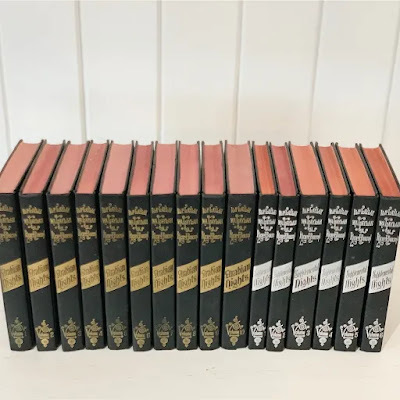 Richard F. Burton: The Book of the Thousand Nights and a Night (c.1940s)
Richard F. Burton: The Book of the Thousand Nights and a Night (c.1940s)Richard F. Burton, trans. The Book of the Thousand Nights and a Night: A Plain and Literal Translation of the Arabian Nights Entertainments. 1885. 10 vols. U.S.A.: The Burton Club, n.d. [c.1940s].
Richard F. Burton, trans. Supplemental Nights to the Book of the Thousand and One Nights with Notes Anthropological and Explanatory. 1886-88. 6 vols. U.S.A..: The Burton Club, n.d. [c. 1940s].
I remember Jason Books from decades ago, when it was located at the back of a tiny alley off High Street (just behind the Simple Cottage vegetarian restaurant). It was there that I bought my first set of Burton's complete Arabian Nights, in the edition pictured above.
When Maud took it over from then owner Richard Poore, it moved to an attic in Lorne Street, and then to its present position behind Freyberg Square. In all of its various incarnations, though, it's been a source of wonders.
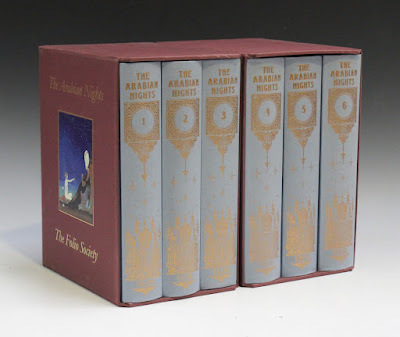 Mardrus / Mathers: The Book of the Thousand Nights and One Night (2003)
Mardrus / Mathers: The Book of the Thousand Nights and One Night (2003)
The Arabian Nights: The Book of the Thousand Nights and One Night, Rendered into English from the Literal and Complete French Translation of Dr. J. C. Mardrus by Powys Mathers. Introduction by Marina Warner. 6 vols. London: The Folio Society, 2003.Vol. 1: with 8 colour illustrations by Kay Nielsen, 375 pp.Vol. 2: with 8 colour illustrations by Grahame Baker, 424 pp.Vol. 3: with 8 colour illustrations by Debra McFarlane, 424 pp.Vol. 4: with 8 colour illustrations by Roman Pisarev, 424 pp.Vol. 5: with 8 colour illustrations by Jane Ray, 431 pp.Vol. 6: with 8 colour illustrations by Neil Packer, 448 pp.
And, to go full circle, it was there, rather more recently, that I bought the above lavishly illustrated version of E. Powys Mathers' translation of Dr. J. C. Mardrus's fin-de-siècle French translation of the Arabian Nights, probably the most entertaining and readable "complete" version available in English.
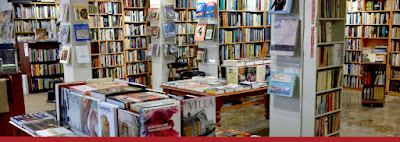 Jason Books
Jason Books•
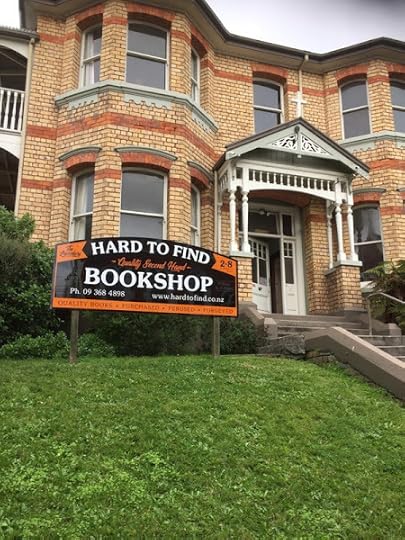 Hard-to-Find Books
Hard-to-Find BooksHard-to-Find Books
[2-8 St Benedicts Street, Eden Terrace, Auckland 1010]
Warwick Jordan's Hard-to-Find Books has an even more complex history, briefly summarised as follows on their website:
The legendary Hard to Find Bookshop (although it didn't have a name then) began in a garage in John Street, Ponsonby in 1983. In 1984 it moved to a shop in Onehunga (now David Tua's boxing gym), and in 1988 to a mainstreet Onehunga location. At one point it expanded to nine stores in five different cities until Warwick realised empire building wasn't really his passion. Even so, he did open one more shop in 2013 ... our Dunedin store which also houses our Internet stock. On June 13th 2018 the Onehunga store closed, opening again on 15th June 2018 at our miraculous new location - 2-8 St Benedict's Street, Eden Terrace, Auckland.I was a fairly frequent visitor to the Onehunga store, but even more so now that the business has moved uptown to the debatable land between Upper Queen Street and Symonds Street. It's a wonderful source of back-catalogue items: definitely the best bookshop I know for those nagging gaps in your collection.
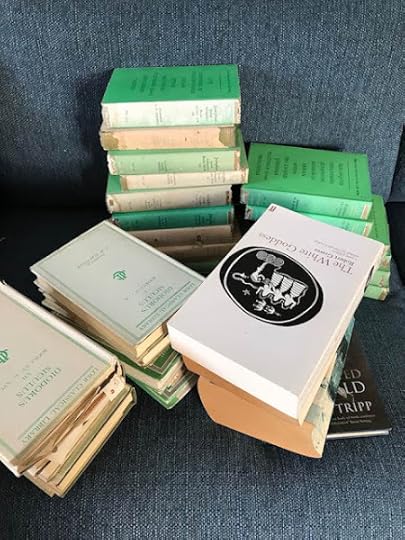 Loeb Classics: Greek Historians (2018)
Loeb Classics: Greek Historians (2018)Diodorus Siculus. The Library of History. 12 vols. Loeb Classics. London: William Heinemann / Cambridge: Harvard University Press, 1960, 1961, 1962, 1963, 1967, 1976, 1977, 1989.Books I-II: 1-34, Trans. C. H. Oldfather (1936)Books II: 35-end, III, IV: 1-58, Trans. C. H. Oldfather (1935)Books IV: 59-VIII, Trans. C. H. Oldfather (1939)Books IX-XII: 40, Trans. C. H. Oldfather (1946)Books XII: 41-XIII, Trans. C. H. Oldfather (1950)Books XIV-XV:19, Trans. C. H. Oldfather (195Books XV: 20-XVI: 65, Trans. Charles L. Sherman (1952)Books XVI: 66-95, XVII, Trans. C. Bradford Welles (1963)Books XVIII-XIX: 1-65, Trans. Russel M. Geer (1947)Books XIX: 66-110, XX, Trans. Russel M. Geer (1954)Books XXI-XXXII, Trans. Francis R. Walton (1967)Books XXXIII-XL / Index, Trans. Francis R. Walton & Russel M. Geer (1967)Josephus. Works. 9 vols. Loeb Classics. London: William Heinemann / Cambridge: Harvard University Press, 1961, 1966.The Life / Against Apion, Trans. H. St. J. Thackeray (1926)The Jewish War, Books I-III, Trans. H. St. J. Thackeray (1927)The Jewish War, Books IV-VII, Trans. H. St. J. Thackeray (1928)Jewish Antiquities, Books I-IV, Trans. H. St. J. Thackeray (1930)Jewish Antiquities, Books V-VIII, Trans. H. St. J. Thackeray & Ralph Marcus (1934)Jewish Antiquities, Books IX-XI, Trans. Ralph Marcus (1937)Jewish Antiquities, Books XII-XIV, Trans. Ralph Marcus (1943)Jewish Antiquities, Books XV-XVII, Trans. Ralph Marcus & Allen Wikgren (1963)Jewish Antiquities, Books XVIII-XX / General Index, Trans. Louis H. Feldman (1965)Polybius. The Histories. Trans. W. R. Paton. Introduction by Col. H. J. Edwards. 6 vols. 1922, 1922, 1923, 1925, 1926, 1927. Loeb Classics. London: William Heinemann / Cambridge: Harvard University Press, 1967, 1968, 1972.
I once horrified Bronwyn by buying a huge mountain of Loeb Classics Greek Historians from the Onehunga shop. I hope the guy who sold them to me was joking when he said that this would guarantee his wages for the next week, but who knows?
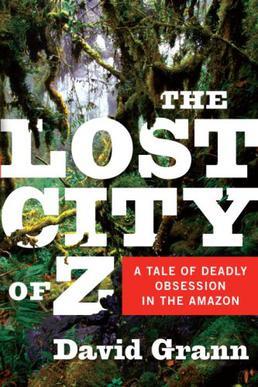 David Grann: The Lost City of Z (2009)
David Grann: The Lost City of Z (2009)Grann, David. The Lost City of Z: A Legendary British Explorer's Deadly Quest to Uncover the Secrets of the Amazon. 2009. Pocket Books. London: Simon & Schuster UK Ltd., 2010.
Another, rather odder experience was my attempt to find a copy of The Lost City of Z in the Hard-to-Find branch in Dunedin. I can't quite remember why I was so anxious to read it - I guess I must have just seen the film - but I knew that if it was available anywhere, it would be available there.
And sure enough, it was! That's the great thing about Hard-to-Find: the sheer critical mass of books they stock make them the best place to look for particular troublesome items.
The funny thing came when I whipped out my Society of Authors membership card, which came with a list on the back of 'participating bookstores' in their 10% off for struggling writers scheme. Hard-to-Find was listed among them, and I'd used it many times at the Auckland store.
"Society of Authors? Is that even a thing? I mean, I've heard of the screenwriters guild and so on, but - did you make it up yourself?" asked the young lady serving at the counter that day.
"No, no, it's a real thing," I expostulated. "It's affiliated with PEN International."
"What's PEN International?" she riposted.
At this point I felt I'd better quit while I was ahead. Nice to know that someone working in a bookshop had so little interest in the people who actually produce the goods she was selling, but I guess it's good to be reminded of our collective insignificance from time to time.
It was pretty funny at the time, though. I'm sure she remained quite unconvinced by all my attempts to prove that there was such a thing as the Society of Authors, and the whole thing does sound a bit nerdy when you really come down to it ...
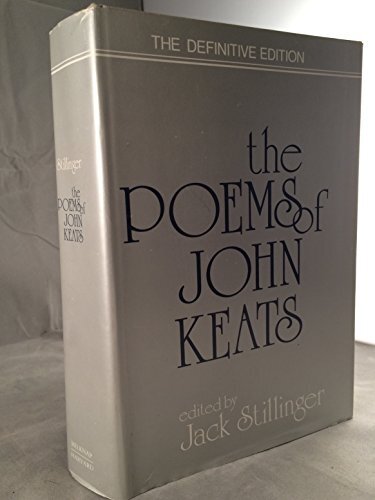 Jack Stillinger, ed.: The Poems of John Keats (2009)
Jack Stillinger, ed.: The Poems of John Keats (2009)Stillinger, Jack, ed. The Poems of John Keats: The Definitive Edition. London: Heinemann Educational Books Ltd., 1978.
I've bought a slew of books - fiction, poetry, travel - from the new brick edifice in St. Benedict's Street. It's now almost as choked with stock as the old Onehunga shop was. The above edition of John Keats was a very pleasant addition to their number. Honestly, you never know what you're going to see when you go in there, which is another good reason for rationing myself to occasional visits.
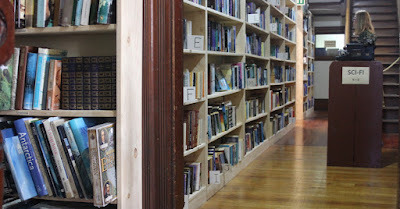 Hard-to-Find Books
Hard-to-Find Books•
Published on February 01, 2023 12:12
January 30, 2023
My Favourite Vintage Bookshops: Waikato
 William Fisk: George Catlin (1849)
William Fisk: George Catlin (1849)Raglan - for those of you who haven't been there - is a scenic little town on the West Coast known mostly for surfing and beaches. It also boasts a rather interesting second-hand bookshop. In My Good Books opened some ten years ago. It's still going strong - albeit under new management, and with a new name: Well Read Books .
But what, you may ask, is the connection with American artist and traveller George Catlin, pictured above?
 George Catlin: The North American Indians (1844)
George Catlin: The North American Indians (1844)George Catlin. Letters and Notes on the Manners, Customs, and Conditions of the North American Indians, Written During Eight Years' Travel (1832-1839) amongst the Wildest Tribes of Indians in North America. 1844. Introduction by Marjorie Halpin. 1965. 2 vols. New York: Dover Publications, Inc., 1973.
Well, I was in the shop a couple of years ago when I noticed a considerable pile of books about Native American history and culture over in one corner. I chose a few - most notably the ones pictured below - to come home with me.
 Angie Debo: A History of the Indians of the United States (1970)
Angie Debo: A History of the Indians of the United States (1970)Angie Debo. A History of the Indians of the United States. 1970. Pimlico 174. London: Random House, 1995.
As I lugged them over to the owner of the shop, I commented that someone must have sold her their entire Native American collection. "They're mine, actually," she replied.
 John Ehle: Trail of Tears (1988)
John Ehle: Trail of Tears (1988)John Ehle. Trail of Tears: The Rise and Fall of the Cherokee Nation. 1988. Anchor Books. New York: Random House Inc., 1989.
Which sparked a conversation. She said that she'd only creamed off a few of her books on the subject. In particular, as a direct descendant of George Catlin, she had a lot of material related to him, including a first edition of his classic Letters and Notes on the Manners, Customs, and Conditions of the North American Indians. All that she'd hung onto.
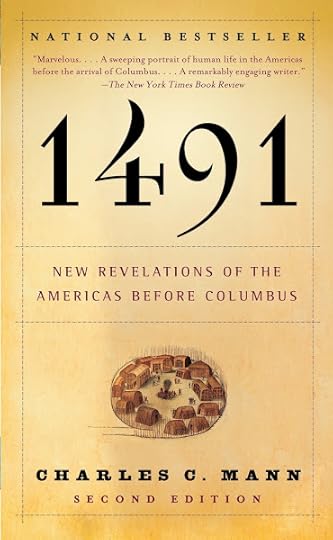 Charles C. Mann: 1491 (2005)
Charles C. Mann: 1491 (2005)Charles C. Mann. 1491: New Revelations of the Americas Before Columbus. 2005. 2nd ed. Vintage Books. New York: Random House, Inc., 2011.
It's always nice to meet a fellow enthusiast for some fairly recondite area of study. Native American culture is certainly something that fascinates many people, but it seemed to surprise her not only that I knew who George Catlin was, but that I already owned a copy of his magnum opus (only as a Dover reprint, mind you, but those can be very useful at times).
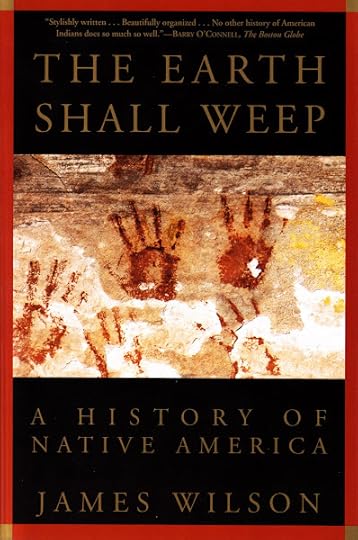 James Wilson: The Earth Shall Weep (1998)
James Wilson: The Earth Shall Weep (1998)James Wilson. The Earth Shall Weep: A History of Native America. New York: Grove Press, 1998.
All in all, we had a great old natter. I was able to reassure her that her books would be going to a good home, where they would be read and appreciated, and congratulated her on her courage in feeling able to part with so many of them.
She mentioned that much of this downsizing was due to the fact that she was looking for a buyer for the business, so it came as no great surprise to hear some short time later that her shop had closed.
What did come as a surprise was the news that it had been bought, and would soon be reopening. I've visited it a few times now in its new guise, and am glad to report that it's still a delightfully unpredictable bookshop, with unexpected treasures to be stumbled upon.
•
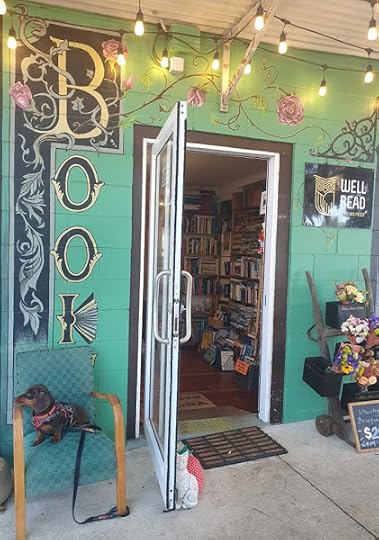 Well Read Books
Well Read BooksWell Read Books
[2 Wallis Street, Raglan 3225]
Here's one of those treasures. I wrote a post a year or so ago about the great Scottish writer James Hogg. Well, it was in Raglan that I found a pre-loved copy of his classic Gothic thriller The Confessions of a Justified Sinner in the wonderfully comprehensive Stirling / South Carolina Research Edition of his Collected Works:
 James Hogg: The Confessions of a Justified Sinner (1824)
James Hogg: The Confessions of a Justified Sinner (1824)James Hogg. The Private Memoirs and Confessions of a Justified Sinner, Written by Himself: With a Detail of Curious Traditionary Facts and Other Evidence by the Editor. 1824. Ed. P. D. Garside. Afterword by Ian Campbell. Chronology by Gillian Hughes. The Stirling / South Carolina Research Edition of the Collected Works of James Hogg. 2001. Edinburgh: Edinburgh University Press, 2010.
I suppose that it must have been abandoned by some international visitor: Raglan is, after all, an important stop on the tourist itinerary for surfers and adventurers generally. This guarantees a steady supply of new books, as well as a constantly shifting audience of readers.
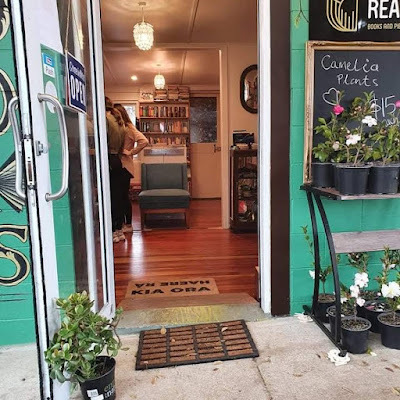 Well Read Books
Well Read Books•
 Browsers
BrowsersBrowsers Books
[298 Victoria Street, Riverbank Lane, Hamilton 3204]
Just a short drive across country from Raglan, in the heart of the region's capital, Hamilton, you'll find the delightfully eclectic bookshop Browsers.
It's hard to count up all the books that I've purchased from them. I suppose one of the most dramatic finds was a copy of a three volume edition of The Early Writings of Charlotte Brontë which had been presented to her old school by the editor, and then (presumably) callously culled in some subsequent library purge:
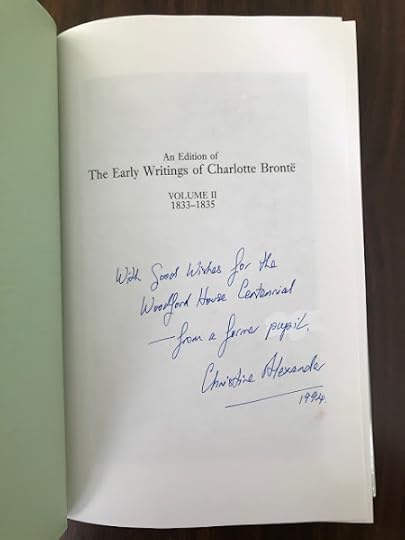 Charlotte Brontë: The Early Writings (3 vols, 1987-91)
Charlotte Brontë: The Early Writings (3 vols, 1987-91)Christine Alexander, ed. An Edition of the Early Writings of Charlotte Brontë. 3 vols. Shakespeare Head Press. Oxford & New York: Basil Blackwell, 1987-91.The Glass Town Saga, 1826-1832 (1987)The Rise of Angria, 1833-1835. Part 1: 1833-1834 (1991)The Rise of Angria, 1833-1835. Part 2: 1834-1835 (1991)
I've written a post about that one, too.
Another, equally unexpected find was a multi-volumed edition of the Complete Essays of Aldous Huxley. Or rather, vols 2-6 of the set (I subsequently located volume 1 online). You may well ask why anyone would want such a thing, but I've always had a bit of a soft spot for Huxley's writing, ever since I first read The Devils of Loudun and Crome Yellow as a teenager.
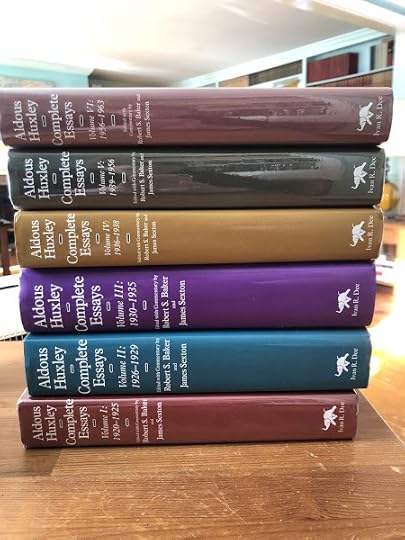 Aldous Huxley: Complete Essays (6 vols, 2000-02)
Aldous Huxley: Complete Essays (6 vols, 2000-02)Aldous Huxley. Complete Essays. Ed. Robert S. Baker & James Sexton. Chicago: Ivan R. Dee, 2000-02.1920-1925 (2000)1926-1929 (2000)1930-1935 (2001)1936-1938 (2001)1939-56 (2002)1956-1963, and Supplement: 1920-1948 (2002)
In any case, it looks great on the shelf, and given that his essays have probably lasted better than his prose, I'm glad to have it to dip into.
Just as the Raglan bookshop benefits from a constant influx of beach-loving visitors, so Browsers is indebted to the staff and students of Waikato University and Wintec for a good turnover of books. Retiring - and itinerant - academics often have shelves of books they need to get rid of in a hurry, and there can be some real treasures among them.
Hamilton is a great place to visit at the best of times: the gardens, the art gallery, but the bookshops - both new ( Poppies ) and second-hand - are really the icing on the cake: so far as I'm concerned, at any rate. Long may they prosper.
 Browsers
BrowsersNext: back to central Auckland!
•
Published on January 30, 2023 13:21
My Favourite Vintage Bookshops: Waikato
 William Fisk: George Catlin (1849)
William Fisk: George Catlin (1849)Raglan - for those of you who haven't been there - is a scenic little town on the West Coast known mostly for surfing and beaches. It also boasts a rather interesting second-hand bookshop. In My Good Books opened some ten years ago. It's still going strong - albeit under new management, and with a new name: Well Read Books .
But what, you may ask, is the connection with American artist and traveller George Catlin, pictured above?
 George Catlin: The North American Indians (1844)
George Catlin: The North American Indians (1844)George Catlin. Letters and Notes on the Manners, Customs, and Conditions of the North American Indians, Written During Eight Years' Travel (1832-1839) amongst the Wildest Tribes of Indians in North America. 1844. Introduction by Marjorie Halpin. 1965. 2 vols. New York: Dover Publications, Inc., 1973.
Well, I was in the shop a couple of years ago when I noticed a considerable pile of books about Native American history and culture over in one corner. I chose a few - most notably the ones pictured below - to come home with me.
 Angie Debo: A History of the Indians of the United States (1970)
Angie Debo: A History of the Indians of the United States (1970)Angie Debo. A History of the Indians of the United States. 1970. Pimlico 174. London: Random House, 1995.
As I lugged them over to the owner of the shop, I commented that someone must have sold her their entire Native American collection. "They're mine, actually," she replied.
 John Ehle: Trail of Tears (1988)
John Ehle: Trail of Tears (1988)John Ehle. Trail of Tears: The Rise and Fall of the Cherokee Nation. 1988. Anchor Books. New York: Random House Inc., 1989.
Which sparked a conversation. She said that she'd only creamed off a few of her books on the subject. In particular, as a direct descendant of George Catlin, she had a lot of material related to him, including a first edition of his classic Letters and Notes on the Manners, Customs, and Conditions of the North American Indians. All that she'd hung onto.
 Charles C. Mann: 1491 (2005)
Charles C. Mann: 1491 (2005)Charles C. Mann. 1491: New Revelations of the Americas Before Columbus. 2005. 2nd ed. Vintage Books. New York: Random House, Inc., 2011.
It's always nice to meet a fellow enthusiast for some fairly recondite area of study. Native American culture is certainly something that fascinates many people, but it seemed to surprise her not only that I knew who George Catlin was, but that I already owned a copy of his magnum opus (only as a Dover reprint, mind you, but those can be very useful at times).
 James Wilson: The Earth Shall Weep (1998)
James Wilson: The Earth Shall Weep (1998)James Wilson. The Earth Shall Weep: A History of Native America. New York: Grove Press, 1998.
All in all, we had a great old natter. I was able to reassure her that her books would be going to a good home, where they would be read and appreciated, and congratulated her on her courage in feeling able to part with so many of them.
She mentioned that much of this downsizing was due to the fact that she was looking for a buyer for the business, so it came as no great surprise to hear some short time later that her shop had closed.
What did come as a surprise was the news that it had been bought, and would soon be reopening. I've visited it a few times now in its new guise, and am glad to report that it's still a delightfully unpredictable bookshop, with unexpected treasures to be stumbled upon.
•
 Well Read Books
Well Read BooksWell Read Books
[2 Wallis Street, Raglan 3225]
Here's one of those treasures. I wrote a post a year or so ago about the great Scottish writer James Hogg. Well, it was in Raglan that I found a pre-loved copy of his classic Gothic thriller The Confessions of a Justified Sinner in the wonderfully comprehensive Stirling / South Carolina Research Edition of his Collected Works:
 James Hogg: The Confessions of a Justified Sinner (1824)
James Hogg: The Confessions of a Justified Sinner (1824)James Hogg. The Private Memoirs and Confessions of a Justified Sinner, Written by Himself: With a Detail of Curious Traditionary Facts and Other Evidence by the Editor. 1824. Ed. P. D. Garside. Afterword by Ian Campbell. Chronology by Gillian Hughes. The Stirling / South Carolina Research Edition of the Collected Works of James Hogg. 2001. Edinburgh: Edinburgh University Press, 2010.
I suppose that it must have been abandoned by some international visitor: Raglan is, after all, an important stop on the tourist itinerary for surfers and adventurers generally. This guarantees a steady supply of new books, as well as a constantly shifting audience of readers.
 Well Read Books
Well Read Books•
 Browsers
BrowsersBrowsers Books
[298 Victoria Street, Riverbank Lane, Hamilton 3204]
Just a short drive across country from Raglan, in the heart of the region's capital, Hamilton, you'll find the delightfully eclectic bookshop Browsers.
It's hard to count up all the books that I've purchased from them. I suppose one of the most dramatic finds was a copy of a three volume edition of The Early Writings of Charlotte Brontë which had been presented to her old school by the editor, and then (presumably) callously culled in some subsequent library purge:
 Charlotte Brontë: The Early Writings (3 vols, 1987-91)
Charlotte Brontë: The Early Writings (3 vols, 1987-91)Christine Alexander, ed. An Edition of the Early Writings of Charlotte Brontë. 3 vols. Shakespeare Head Press. Oxford & New York: Basil Blackwell, 1987-91.The Glass Town Saga, 1826-1832 (1987)The Rise of Angria, 1833-1835. Part 1: 1833-1834 (1991)The Rise of Angria, 1833-1835. Part 2: 1834-1835 (1991)
I've written a post about that one, too.
Another, equally unexpected find was a multi-volumed edition of the Complete Essays of Aldous Huxley. Or rather, vols 2-6 of the set (I subsequently located volume 1 online). You may well ask why anyone would want such a thing, but I've always had a bit of a soft spot for Huxley's writing, ever since I first read The Devils of Loudun and Crome Yellow as a teenager.
 Aldous Huxley: Complete Essays (6 vols, 2000-02)
Aldous Huxley: Complete Essays (6 vols, 2000-02)Aldous Huxley. Complete Essays. Ed. Robert S. Baker & James Sexton. Chicago: Ivan R. Dee, 2000-02.1920-1925 (2000)1926-1929 (2000)1930-1935 (2001)1936-1938 (2001)1939-56 (2002)1956-1963, and Supplement: 1920-1948 (2002)
In any case, it looks great on the shelf, and given that his essays have probably lasted better than his fiction, I'm glad to have it to dip into.
Just as the Raglan bookshop benefits from a constant influx of beach-loving visitors, so Browsers is indebted to the staff and students of Waikato University and Wintec for a good turnover of books. Retiring - and itinerant - academics often have shelves of books they need to get rid of in a hurry, and there can be some real treasures among them.
Hamilton is a great place to visit at the best of times: the gardens, the art gallery, but the bookshops - both new ( Poppies ) and second-hand - are really the icing on the cake: so far as I'm concerned, at any rate. Long may they prosper.
 Browsers
BrowsersNext: back to central Auckland!
•
Published on January 30, 2023 12:11
January 19, 2023
My Favourite Vintage Bookshops: North Shore
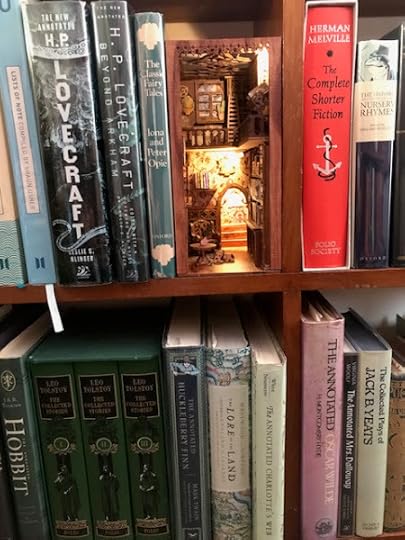 Bronwyn Lloyd: Book Nook 1 (3-1-23)
Bronwyn Lloyd: Book Nook 1 (3-1-23)They are an endangered species: there's little doubt of that. It's not that the second-hand booktrade is going to wither up and disappear; it's just that increasingly it's shifting online, and turning exclusively to mail-order instead.
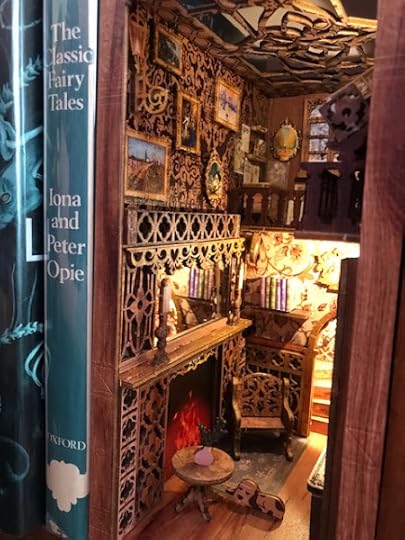 Bronwyn Lloyd: Book Nook 2 (3-1-23)
Bronwyn Lloyd: Book Nook 2 (3-1-23)And yet, we each have in our mind's eye an image of the perfect antiquarian bookshop: perhaps a bit like this one Bronwyn and I - well, mostly Bronwyn - painstakingly assembled from the kitset she gave me for Christmas ...
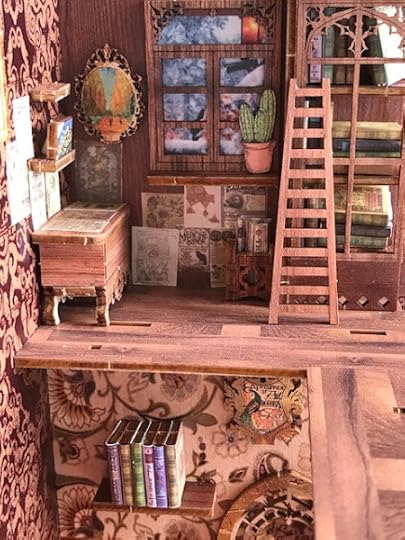 Bronwyn Lloyd: Book Nook 3 (3-1-23)
Bronwyn Lloyd: Book Nook 3 (3-1-23)Look at those cute little miniature books! You wouldn't guess that each one had to be made up separately, along with all the pieces of furniture, windows, wall-hangings, and so on.
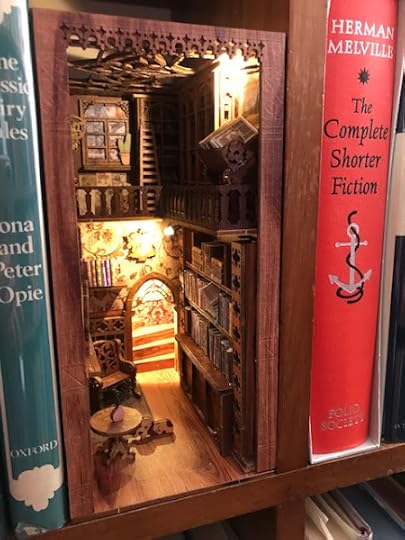 Bronwyn Lloyd: Book Nook 4 (3-1-23)
Bronwyn Lloyd: Book Nook 4 (3-1-23)But wouldn't you like to walk in there, sit down in that armchair, and stare up at that big boookcase with its shelves weighed down with stock? There'd be bound to be some treasures there, some gems that you'd heard of or read about, but never seen in the flesh. There they'd be, waiting for you ...
A few years ago I wrote a similarly elegiac post called Lost Bookshops of Auckland where I tried to list some of those I remembered from forty-odd years of haunting the backstreets of the city.
In it I tried to give a sense of how real they remain to me. This time round, though, I thought it might be better to concentrate on all the lovely shops that are still with us, open for business, and dependent on our patronage to survive.
Of course I'm in two minds about revealing some of my secret haunts like this: but then if I don't, and nobody visits them, then they'll end up disappearing anyway, so it turns out that the best and most practical (as well as the kindest) solution is to share.
•
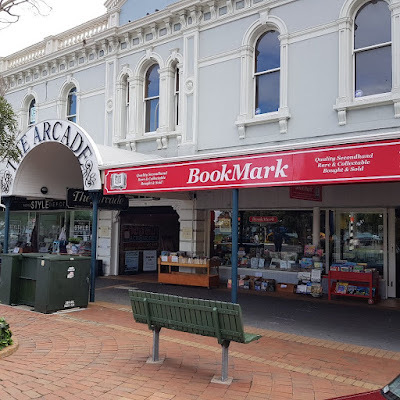 Bookmark
BookmarkBookmark
[15 Victoria Road, Devonport]
I've bought a lot of books at Bookmark over the years, both in its previous location just off Hurstmere Rd in Takapuna, and at its present home on the main street of Devonport.
What were a few of the highlights?
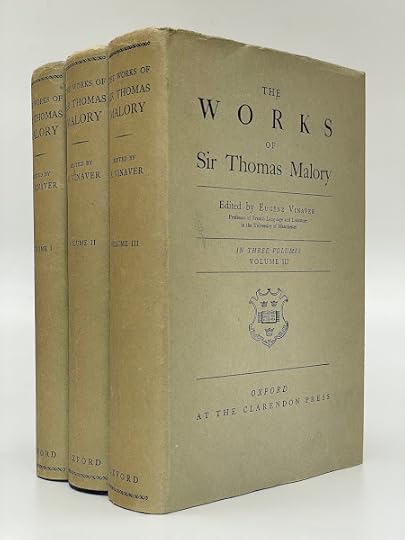 Eugène Vinaver, ed.: The Works of Sir Thomas Malory (1947)
Eugène Vinaver, ed.: The Works of Sir Thomas Malory (1947)Eugène Vinaver, ed. The Works of Sir Thomas Malory. 1947. 3 vols. Oxford English Texts. Oxford: Clarendon Press, 1948.
Well, first on the list would undoubtedly be the magnificent 3-volume set of the complete works of Malory which I picked up there some six or seven years back (as I recorded in this post at the time).
Since then there have been finds too numerous to count. I suppose the most spectacular might be the two Folio Society sets of George Orwell bought there at different times (one was my Christmas present from my mother last year):
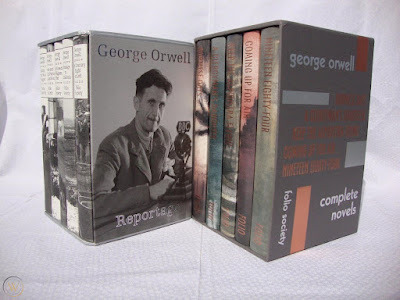 George Orwell: Reportage / Novels (1998 / 2001)
George Orwell: Reportage / Novels (1998 / 2001)George Orwell. Novels. Ed. Peter Davison. 1998. 5 vols. London: The Folio Society, 2001.Burmese Days (1934)A Clergyman's Daughter (1935)Keep the Aspidistra Flying (1936)Coming Up for Air (1939)Nineteen Eighty-Four (1949) George Orwell. Reportage. Ed. Peter Davison. 1987. 5 vols. London: The Folio Society, 1998.Down and Out in Paris and London. Introduced by Michael Foot (1933)The Road to Wigan Pier (1937)Homage to Catalonia (1938)My Country Right or Left, and Other Selected Essays and Journalism (1986)Funny, But Not Vulgar, and Other Selected Essays and Journalism (1986)
It's always been a friendly, relaxing place to browse in - though a perilous one from my point of view!
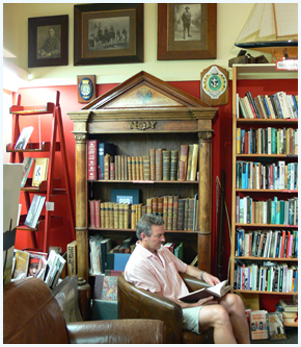 Mark Owen of Bookmark
Mark Owen of Bookmark•
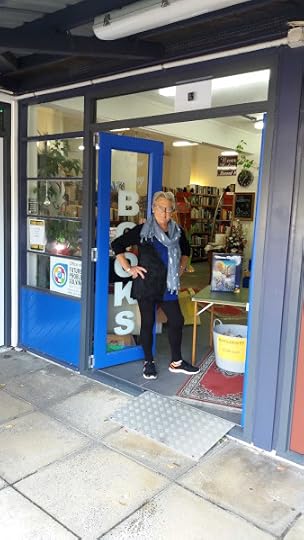 Anne of Never Ending Books
Anne of Never Ending BooksNever Ending Books
[Shop 4/1 Moenui Avenue, Orewa]
Here's a rather less well-known shop, well worth a look if you happen to be driving north up the Hibiscus Coast rather than just barrelling along the motorway.
It started its life as a book exchange rather than a bookshop proper, but that doesn't alter the fact that the retirees of Orewa have provided it with a good deal of interesting stock: medieval and military history in particular.
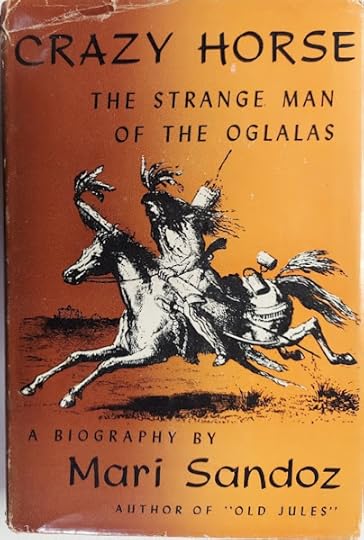 Mari Sandoz: Crazy Horse (1942)
Mari Sandoz: Crazy Horse (1942)Mari Sandoz. Crazy Horse: The Strange Man of the Oglalas, A Biography. Fiftieth Anniversary Edition. 1942. Introduction by Stephen B. Oates. Lincoln & London: University of Nebraska Press, 1992.
I've made some nice discoveries there, particularly in the field of Native American studies: a nice paperback edition of Mari Sandoz's classic biography of Crazy Horse prominent among them.
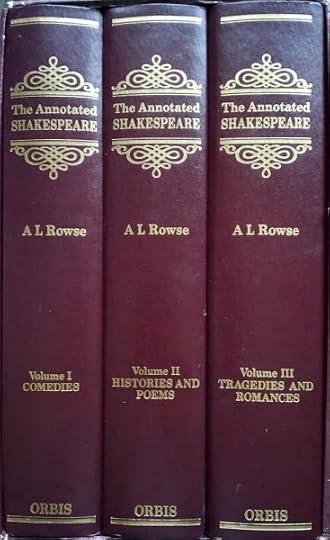 A. L. Rowse, ed.: The Annotated Shakespeare (1978)
A. L. Rowse, ed.: The Annotated Shakespeare (1978)William Shakespeare. The Annotated Shakespeare: The Comedies, Histories, Sonnets and Other Poems, Tragedies and Romances Complete. Ed. A. L. Rowse. 3 vols. London: Orbis Publishing Limited, 1978.ComediesHistories and PoemsTragedies and Romances
Another rather more oddball find was the elaborately annotated edition of Shakespeare pictured above, edited by eccentric Cornish scholar A. L. Rowse.
I'm told by Shakespeare experts that I should be ashamed to offer such a fundamentally unreliable tome shelfroom, but I'm afraid I'm unrepentant. Rowse may be a little prone to exaggerating the merits of his latest theories, but he's always entertaining and even, on occasion, distinctly thought-provoking.
 Never Ending Books
Never Ending BooksSo there you go. Hopefully there'll be further instalments in the series if you find it useful.
•
Published on January 19, 2023 13:54
January 12, 2023
Edgar Allan Poe and The Pale Blue Eye
 Scott Cooper: The Pale Blue Eye (2022)
Scott Cooper: The Pale Blue Eye (2022)
Le tombeau d'Edgar Poe
Tel qu’en lui-même enfin l’éternité le change,
Le Poëte suscite avec un glaive nu
Son siècle épouvanté de n’avoir pas connu
Que la mort triomphait dans cette voix étrange !
Eux, comme un vil sursaut d’hydre oyant jadis l’ange
Donner un sens plus pur aux mots de la tribu
Proclamèrent très haut le sortilège bu
Dans le flot sans honneur de quelque noir mélange.
Du sol et de la nue hostiles, ô grief !
Si notre idée avec ne sculpte un bas-relief
Dont la tombe de Poe éblouissante s’orne,
Calme bloc ici-bas chu d’un désastre obscur,
Que ce granit du moins montre à jamais sa borne
Aux noirs vols du Blasphème épars dans le futur.
- Stéphane Mallarmé (1887)
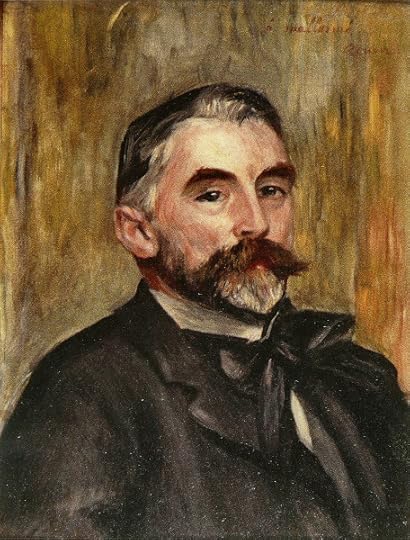 Pierre-Auguste Renoir: Stéphane Mallarmé (2022)
Pierre-Auguste Renoir: Stéphane Mallarmé (2022)I thought I'd start off my discussion of the recent Netflix movie The Pale Blue Eye - which I very much enjoyed, in case anyone's wondering - by quoting Mallarmé's immortal poem "The Tomb of Edgar Poe."
I was going to add a literal translation of it, but then I ran across the one below, by American poet Richard Wilbur, which it's hard to imagine improving on:
The Tomb of Edgar Poe
Changed by eternity to Himself at last,
The Poet, with the bare blade of his mind,
Thrusts at a century which had not divined
Death's victory in his voice, and is aghast.
Aroused like some vile hydra of the past
When an angel proffered pure words to mankind,
Men swore that drunken squalor lay behind
His magic potions and the spells he cast.
The wars of earth and heaven - O endless grief!
If we cannot sculpt from them a bas-relief
To ornament the dazzling tomb of Poe,
Calm block here fallen from some far disaster,
Then let this boundary stone at least say no
To the dark flights of Blasphemy hereafter.
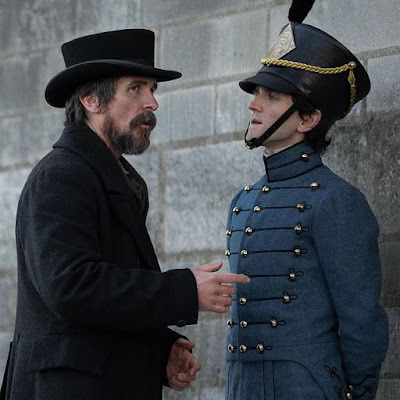 Christian Bale as Landor & Harry Melling as Edgar Allan Poe (2022)
Christian Bale as Landor & Harry Melling as Edgar Allan Poe (2022)Is it just me, or do you see some resemblance between the whiskery face of France's greatest symbolist poet and that of Christian Bale, above, in his role as "Landor" in the movie?
Mallarmé's implication that it is poets who are meant to give "a purer sense to the words of the tribe" [Donner un sens plus pur aux mots de la tribu] lies at the heart of Modernist aesthetics. It ranks with Baudelaire - another Poe fanatic - and his view of the poet as a wave-riding albatross, expounded in his verse of the same name:
Le Poète est semblable au prince des nuées
Qui hante la tempête et se rit de l'archer;
Exilé sur le sol au milieu des huées,
Ses ailes de géant l'empêchent de marcher.
The Poet is like that wild inheritor of the cloud,(The translation, this time, is by George Dillon, Edna St. Vincent Millay's collaborator in their joint 1936 version of Baudelaire's Flowers of Evil)
A rider of storms, above the range of arrows and slings;
Exiled on earth, at bay amid the jeering crowd,
He cannot walk for his unmanageable wings.
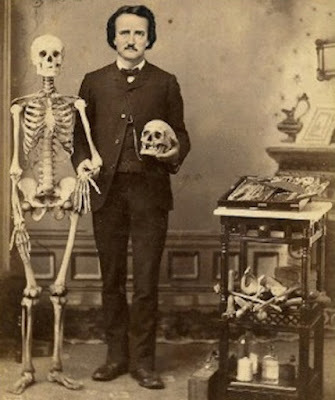 Edgar Allan Poe (1809-1849)
Edgar Allan Poe (1809-1849)Edgar Allan Poe ... yes, we know all about him (or think we do): the inventor of the detective story; the misunderstood genius, betrayed by the vindictive jealousy of his literary executor, Rufus Griswold, who almost single-handedly constructed the myth of his drunkenness and infamy; the visionary poet, first recognised by the French before the English-language world reluctantly followed their example; and - somewhat surprisingly - once, briefly, a cadet at West Point, where the film is quite correct in placing him.
What then of the Holmes to Poe's Watson, Augustus Landor? Well, the "Augustus" comes, presumably, from Poe's own prototypical detective Auguste Dupin, the protagonist of "The Murders in the Rue Morgue", "The Mystery of Marie Rogêt", and the distinctly Borgesian "Purloined Letter".
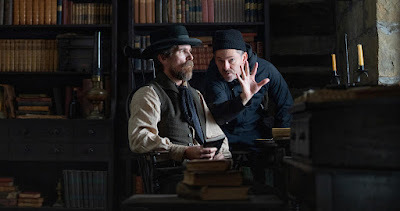 The Pale Blue Eye (2022)
The Pale Blue Eye (2022)As for "Landor", rather than English poet Walter Savage Landor, it seems probable that his surname is meant to refer to the little-known vignette "Landor's Cottage" - the last story Poe ever wrote, in fact - which describes the house he himself was living in at the time. The Landor of the film, too, inhabits a particularly picturesque and bookish cottage.
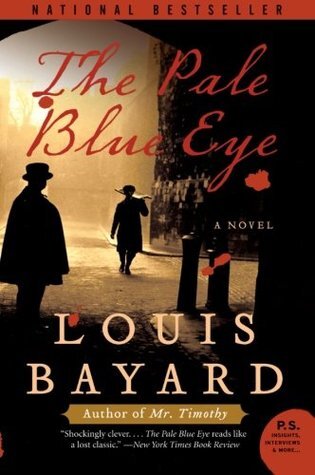 Louis Bayard: The Pale Blue Eye (2006)
Louis Bayard: The Pale Blue Eye (2006)Mind you, most of this inventiveness must be attributed, not so much to the film-makers as to the author of the novel the movie is based on, Louis Bayard. I'm guessing, like many of us, he found frustrating the inconclusiveness of "Landor's cottage": a long descriptive preamble to a promised story to be told in a next instalment which, alas, was never to appear.
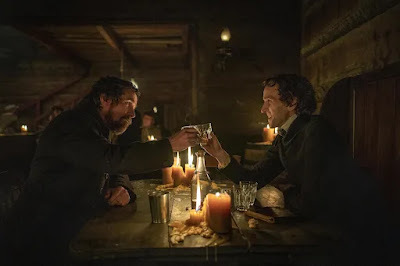 Landor meets Poe
Landor meets PoeAll this trivia aside, I have to admit that I was somewhat surprised to find so lukewarm a response to the movie in a number of quarters. Most of them criticised the film's "implausibility" and "inaction", which struck me as a little perverse, given the prevalence of both factors in Poe's own published writings.
As critics then and now have often failed to grasp, with Romantic artists such as Poe, it's all or nothing: you're in or you're out. If you have a problem with orangutans committing murders or with the propensity of Poe's heroines to get themselves buried alive or have their teeth extracted post-mortem, then you'd better stick to realists like Dickens or Trollope.
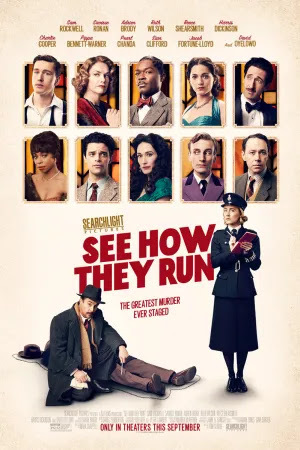 See How They Run (2022)
See How They Run (2022)Or, in this case, you'd better stick to bad parodies of Agatha Christie, such as the dreadfully tedious and poorly plotted recent whodunit above. I was interested to see that many of those who'd awarded The Pale Blue Eye two or three stars had given See How They Run four or five.
It's not, you understand, that I have a problem with Agatha Christie or the other luminaries of the Golden Age of Detective Fiction in their own right - just with the decision to replay them badly as farce. It does make me realise, though, that in detective films as well as in novels, I'm not really looking for the same things as most aficionados of the genre.
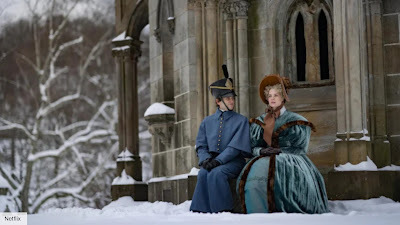 The Colloquy of Poe and Lea - by the family mausoleum (2022)
The Colloquy of Poe and Lea - by the family mausoleum (2022)For me, it's all about atmosphere and character. I like the kinds of scenes - so abundant in The Pale Blue Eye - where characters wander around deserted graveyards, or sit in crowded taverns trading witty banter. Best of all are then occasions when large books are taken down from dust-laden shelves and opened to salient passages - translated impromptu, in this case, by Poe himself as Robert Duvall and Christian Bale look on approvingly.
Does any of this advance the plot, or assist us in unmasking the criminal? Not really, no. I don't care. Murders don't really interest me very much - but I do like a picturesque detective, with lots of hidden demons, and a taste for bamboozling even his closest collaborators.
All of this, of course, is anathema to the true devotees of detective fiction. They like an ingenious solution to the mystery, and such curlicues as believable characters or well-painted backdrops are largely irrelevant to them. Hence their preference for the pasteboard mechanics of See How They Run over the ice-bound dramatics of The Pale Blue Eye.
 Rian Johnson, dir.: Knives Out (2019)
Rian Johnson, dir.: Knives Out (2019)I suppose, in the end, it's best to have both. I did enjoy the original Knives Out, as well as its sequel Glass Onion, I suppose mainly because Daniel Craig was so obviously having the time of his life playing absurd anti-Bond chicken-fried Southerner Benoit Blanc.
There was, as I recall, some kind of a murder being investigated at the time, but I was more interested in watching the characters score points off one another as each of the superannuated stars tried to steal scenes with ever more outrageous business.
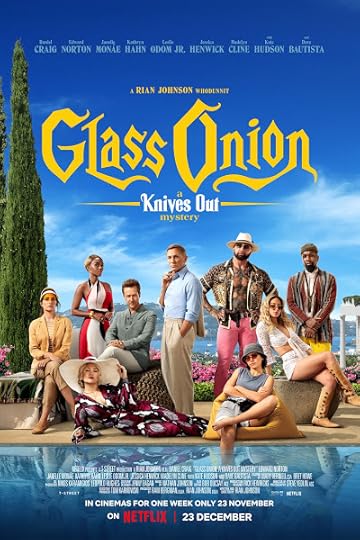 Rian Johnson, dir.: Glass Onion (2022)
Rian Johnson, dir.: Glass Onion (2022)Poe, too, could be ridiculous at times (some would say all the time). But he was, in the end, a very serious guy. He felt strongly about the need for rigorous critical judgements in the infancy of American literature, and the hatchet jobs he performed on many of his more celebrated contemporaries were legendary. Funnily enough, many of those authors are now known simply because Poe decided to critique them.
Harry Melling - perhaps better known as Harry Potter's spoilt cousin Dudley Dursley - does an excellent job of animating the touchy, emotional, fiercely intelligent contradiction that was Poe. Some viewers have commented on the incongruity of a Southern accent for someone born in Boston, but Poe certainly liked to portray himself as a Virginian, so this is certainly an arguable quirk to impose on him.
After all, somewhat closer to our own time, Boston Brahmin poet Robert Lowell affected a Southern accent in his own poetry readings - presumably as a salute to his Southern Agrarian mentors John Crowe Ransom and Allen Tate - as you can hear in this recording of his 1964 poem "For the Union Dead".
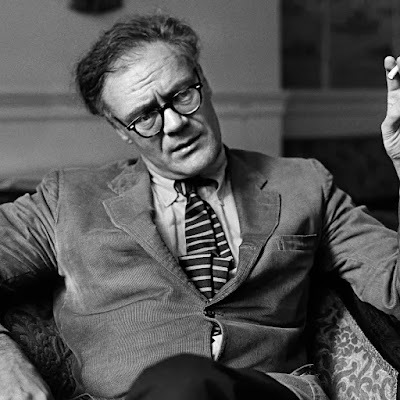 Jane Bown: Robert Lowell
Jane Bown: Robert LowellTalking of poetry, there's been a certain amount of discussion of the verses - allegedly dictated to him by his dead mother - Poe quotes halfway through the movie:
Needless to say, these were not written by Poe - he may have used some dodgy rhymes at times, but I can't see him combining "hurry" with "flurry" and "slurry". Nor is the syntax precise enough for his almost over-controlled style. They do have a pleasing ring in context, though.Down, down, down
Came the hot threshing flurry
Ill at heart, I beseeched her to hurry
Lenore
She forbore the reply
Endless night
Caught her then in its slurry
Shrouding all, but her pale blue eye
Darkest night, black with hell
Charneled fury
Leaving only
The deathly blue eye
His own poem "Lenore", which presumably inspired these lines, is somewhat more conventional in form:
Presumably the flimmakers also had in mind the narrator's sorrow for "the lost Lenore" in "The Raven":
The sweet Lenore hath "gone before," with Hope, that flew beside
Leaving thee wild for the dear child that should have been thy bride -
For her, the fair and debonair, that now so lowly lies,
The life upon her yellow hair but not within her eyes -
The life still there, upon her hair - the death upon her eyes.
Ah, distinctly I remember it was in the bleak December;
And each separate dying ember wrought its ghost upon the floor.
Eagerly I wished the morrow; — vainly I had sought to borrow
From my books surcease of sorrow — sorrow for the lost Lenore —
For the rare and radiant maiden whom the angels name Lenore —
Nameless here for evermore.
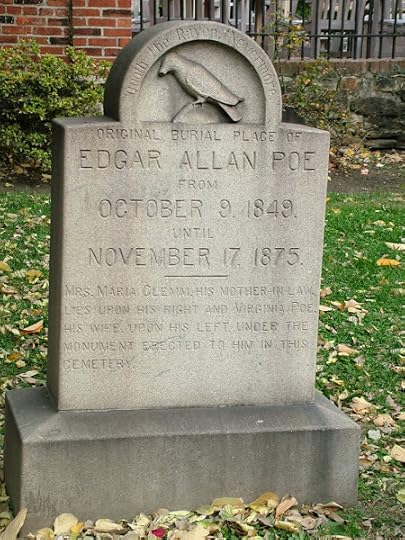 The grave of Edgar Allan Poe (1849-1875)
The grave of Edgar Allan Poe (1849-1875)Somewhat bewilderingly, Poe has more than one grave. The simple headstone above - with its appropriately superimposed raven - is in Baltimore, Maryland. His remains were, however, disinterred in 1875 to be shifted under the rather more pompous monument below - presumably the one which inspired Mallarmé's poem.
A somewhat less accomplished verse - by an equally distinguished admirer, Alfred, Lord Tennyson - was composed for the occasion:
Fate that once denied him,
And envy that once decried him,
And malice that belied him,
Now cenotaph his fame.
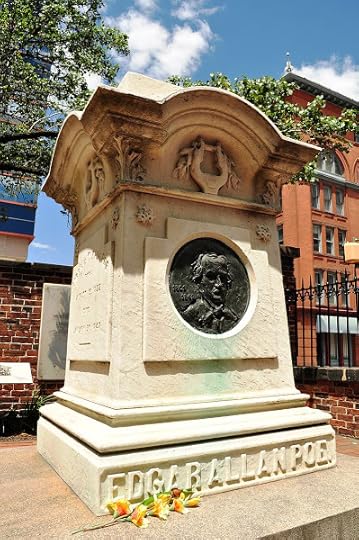 The tomb of Edgar Allan Poe
The tomb of Edgar Allan PoeWhat more need one say? If you love the hothouse atmosphere of Gothic extravagance, thrill to the overblown prose of H. P. Lovecraft or Ray Bradbury's early collection Dark Carnival - why not return to their admitted master, the divinely gifted Mister Poe?
As his literary soulmate and principal French translator Charles Baudelaire put it in an 1864 letter to Théophile Thoré - with, perhaps, a mixture of admiration and chagrin:
The first time I opened a book he had written, I saw with equal measures of horror and fascination, not just the things that I had dreamed of, but actual phrases that I had designed and that he had penned twenty years earlier.One thing's for certain, there will always be a certain region of the imagination identified with Poe's name. If you'd like to explore it further, I strongly recommend a viewing of The Pale Blue Eye.
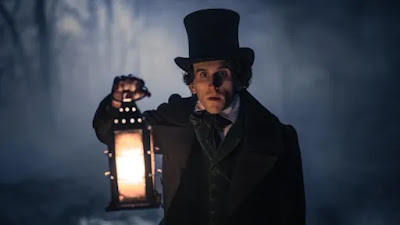 Harry Melling as Edgar Allan Poe
Harry Melling as Edgar Allan Poe
Published on January 12, 2023 14:06
December 31, 2022
Down for the Count
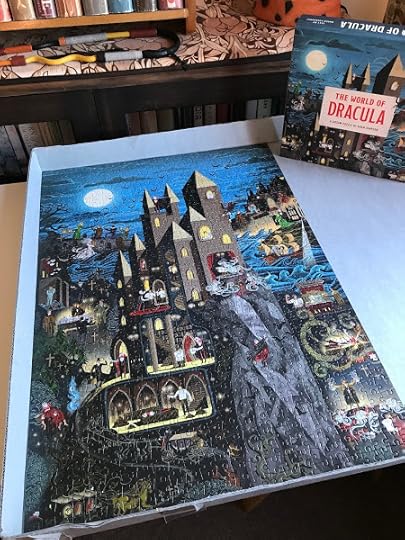 The World of Dracula
The World of Dracula[photographs: Bronwyn Lloyd (2022)]
You may (or may not) recall that at the end of last year I posted a piece about completing a 1,000-piece jigsaw puzzle called The World of Charles Dickens . It was maniacally difficult! So this year we decided to go easy on ourselves by trying to put together, instead, The World of Dracula :
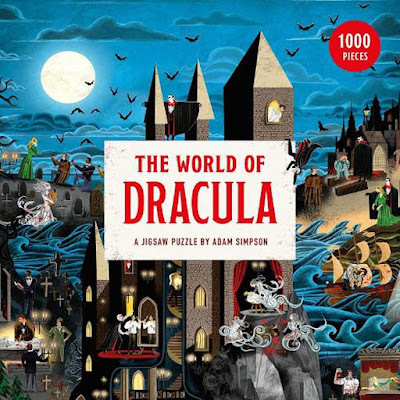
Little did we know that it'd be even worse. Where the Dickens puzzle confounded us with endless little people wandering around mysterious streets with not much to distinguish them from one another, Dracula, by contrast, was all big strokes - lots of versions of the Count, in different poses, in different parts of his castle, surrounded by a seemingly limitless expanse of sky.
If it hadn't been for the bats and the clouds, I doubt if I could ever have pieced that sky together. It was rather canny of Bronwyn to concentrate on the interiors and the action scenes instead.
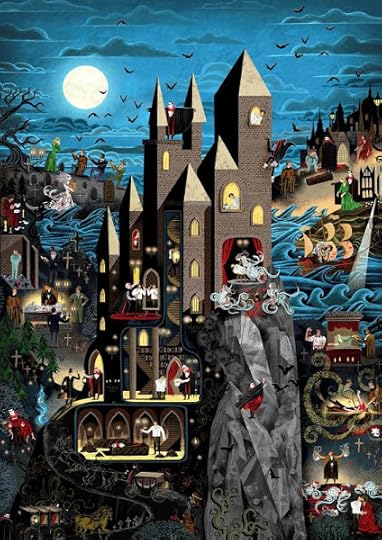 Adam Simpson: The World of Dracula (2021)
Adam Simpson: The World of Dracula (2021)But why Dracula? What is it that attracts me, in particular, to this great repository of folklore and the collective cultural unconscious? It is, of course, by now, far more than a novel: it's been adapted and enacted so many forms in every conceivable medium: comics, film, games, radio, stage, television - you name it, there'll be a version of Dracula there.
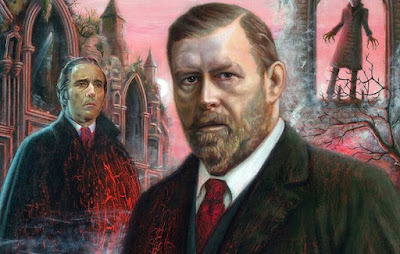 Aidan Hickey: Bram Stoker (1847-1912)
Aidan Hickey: Bram Stoker (1847-1912)I've written quite a bit on the subject already: a piece called "Marginalising Dracula" on the various annotated editions of the book I've collected over the years, as well as the curious scholarly rivalries they enshrine; another piece called "Dracula's Guest" on the prehistory of the novel - not to mention a bibliography of its author, Bram Stoker himself.
 Adam Simpson: The World of Dracula (2021)
Adam Simpson: The World of Dracula (2021)Perhaps the easiest way to explain its appeal is to go through some of the great showpiece scenes of his masterpiece - as visualised by the designer of this puzzle, Adam Simpson.
•
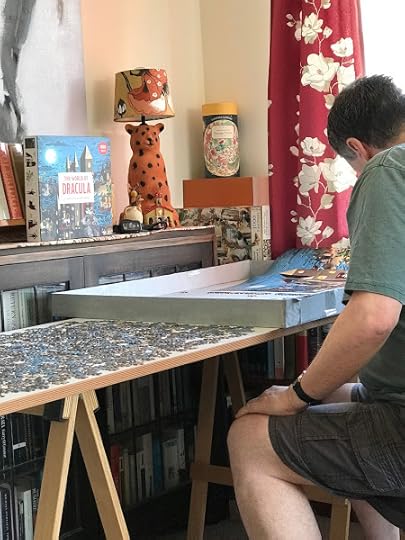
Here I am at the opening stages of the enterprise (apologies for the less-than-glamorous outfit, but you know how it is with getting to work right away on your things-to-assemble on Christmas morning!)
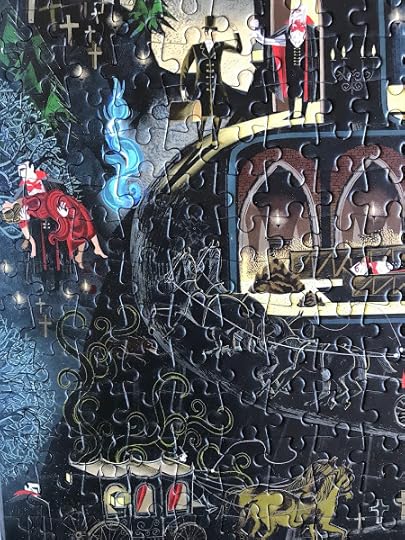
Arrival: This is a novel that starts strong. Jonathan Harker's picturesque tour of quaint old Transylvania is gradually overshadowed by the mysterious warnings of his fellow-travellers, with their muttered refrain of "the dead travel fast", and finally the spectral coach - driven by Dracula in disguise - that picks him up for the last leg of his journey. You can see it all here: the blue flame that guards the gate, and the need for him to state that he enters freely and of his own will before he is able to set foot in Castle Dracula.
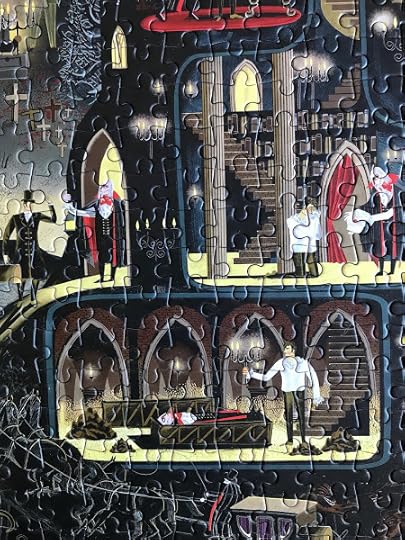
Suspicion: Jonathan Harker's stay in the castle becomes increasingly irksome to him the more he explores its hidden ways. Finally, of course, he discovers the Count himself sleeping in his day-coffin, but by then it's apparent that Jonathan has already prepared his own doom by signing so many legal papers and letters on his arrival.
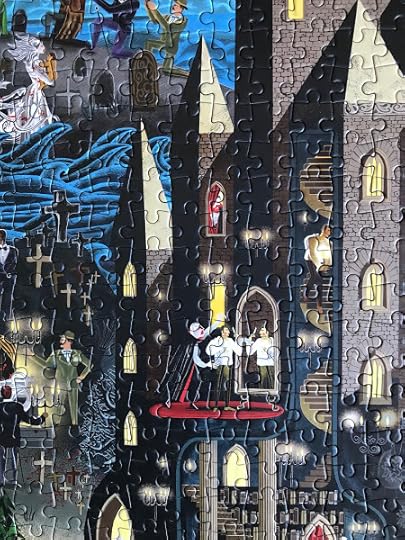
First blood-letting: This is the wonderful scene where the Count is enflamed by the sight of his guest cutting himself shaving. Dracula manages to restrain himself - just - but even to the matter-of-fact Jonathan it's becoming clear that his host is a little more than just ... odd. Why, for instance, is there no reflection of him in the mirror?
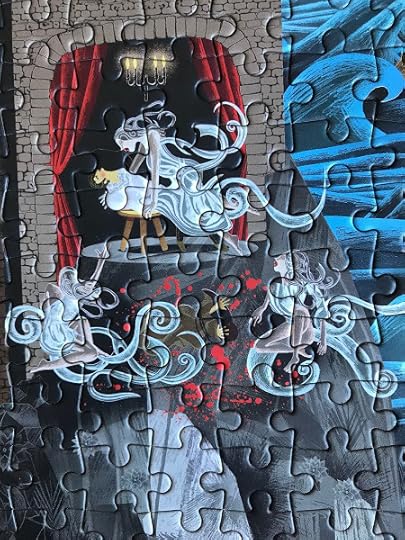
The Three Seductresses: Bram Stoker really lets himself go in this scene where Jonathan is seduced by the Count's three vampire mistresses into accepting their "kisses." Their master is able to save him from them, producing a baby in a bag for them to feast on instead. But from now on he is careful to keep Jonathan weak and on the point of death to prevent any last minute interference with his plans for a new life in London.
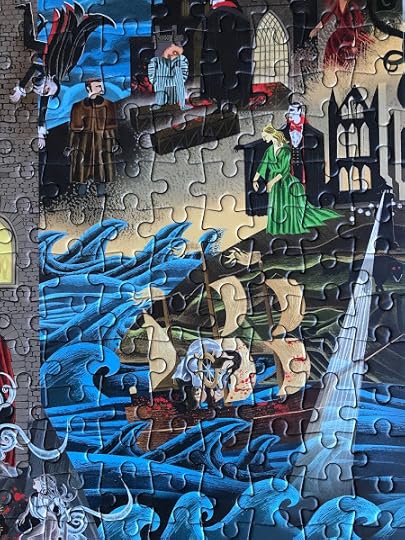
The Voyage: Jonathan does, rather implausibly, manage to escape - but the Count has already taken ship across the Black Sea and the Mediterranean to reach final landfall at Whitby in the North of England. By then he's killed most of the crew, with not enough of them left to sail the vessel. It runs aground, and he's forced to take refuge in the town before making his way to London. (You'll note how the multiple co-existing scenes and time-lines of the jigsaw mesh with the novel's collage of letters, journal entries, newspaper items, and even transcripts of gramophone recordings!)
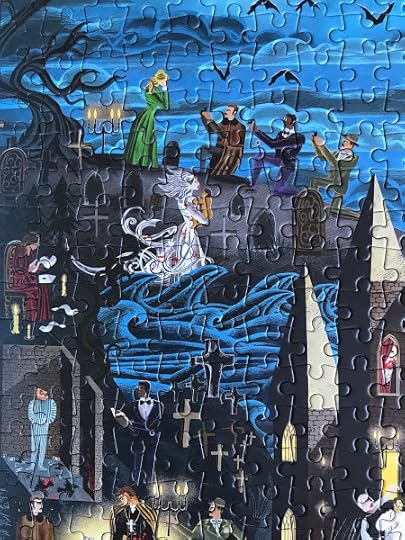
Fighting Back: Here we see Lucy's three suitors proposing to her, one after another. Further down we see the vampire she has become carrying a small child back to her grave to drink its blood. Her death scene is one step down from that, underneath the imprisoned madman Renfield, Dracula's reluctant collaborator.
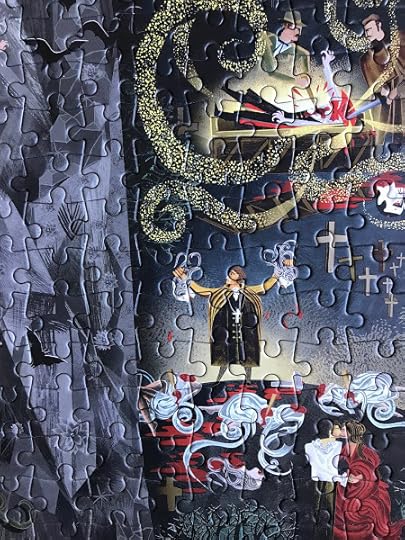
Van Helsing's Triumph: There's a lot going on in these two scenes. Below we see vampire-hunter extraordinaire Abraham Van Helsing holding aloft the severed heads of the three brides of Dracula, having dared to break into the monster's den. Above we see our heroes - Jonathan, Lucy's remaining suitors, and Van Helsing - putting an end to Dracula himself, just as he's about to be revived by the setting sun.
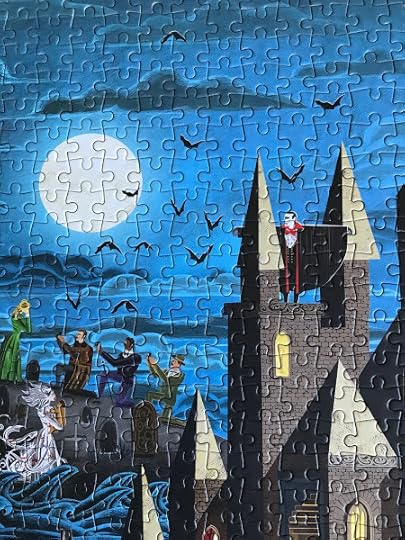
The Count: And yet - the rumours of his death may, in the end, turn out to be greatly exaggerated. As H. P. Lovecraft once put it:
Dracula continues to preside over the puzzle as he does over the narrative: what can death be actually said to mean to one who's already dead? He's distinctly livelier than any of the other characters in the novel, and his staying-power remains prodigious.
That is not dead which can eternal lie,
And with strange aeons even death may die.
The merits of each new major incarcation - Max Schreck, Bela Lugosi, Christopher Lee, Klaus Kinski, Frank Langella, Gary Oldman, and now Claes Bang - may continue to be debated, but the plain fact of the matter is that his cultural cachet can only be matched by that of his one true rival, Sherlock Holmes.
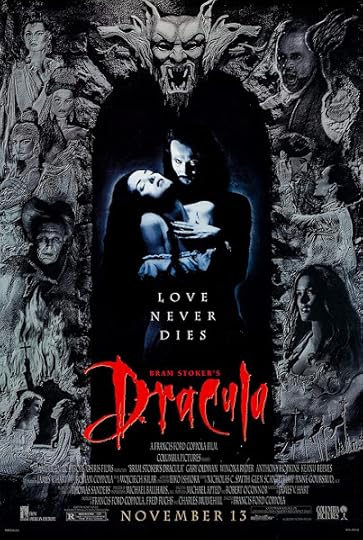 Francis Ford Coppola, dir.: Bram Stoker's Dracula (1992)
Francis Ford Coppola, dir.: Bram Stoker's Dracula (1992)You can find a good summary of his pop culture appearances on the Wikipedia page here; a filmography here; and a free download of the original 1897 novel here. Enjoy.
For myself, it's time now to turn my attention to another exciting project: the "Book Nook" model which was my Christmas present from Bronwyn this year. I can already foresee a lot of wrestling with bottles of glue and sandpaper in my immediate future!
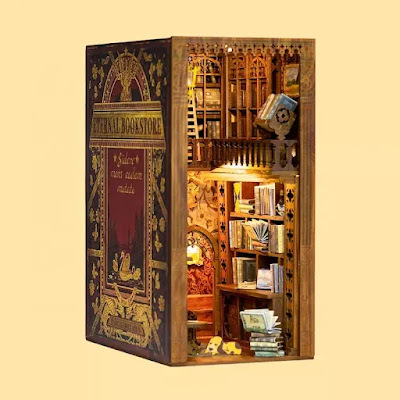 Cutebee: Eternal Bookstore Book Nook Kitset
Cutebee: Eternal Bookstore Book Nook Kitset•
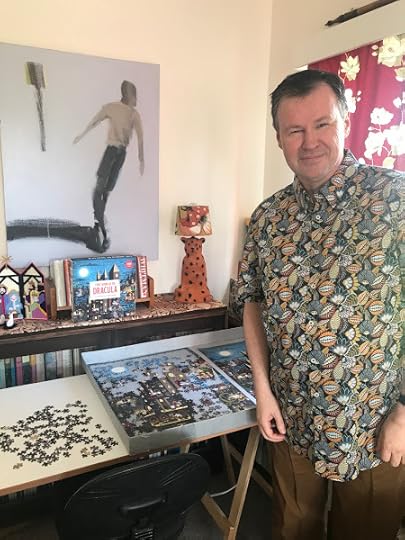 The World of Dracula
The World of Dracula[photograph: Bronwyn Lloyd (2022)]
A Happy New Year to All in
2023!
Published on December 31, 2022 12:24
December 16, 2022
Capote in Kansas
 Ande Parks & Chris Samnee: Capote in Kansas: A Drawn Novel (2005)
Ande Parks & Chris Samnee: Capote in Kansas: A Drawn Novel (2005)Ande Parks. Capote in Kansas: A Drawn Novel. Illustrated by Chris Samnee. Portland, OR: Oni Press, Inc., 2005.
Just as 2004 was (according to David Lodge, at any rate) the year of Henry James, so 2005 was, indisputably, the year of Truman Capote.
Two new feature films were released, both of them based on his sojourn in Kansas researching his non-fiction novel In Cold Blood, as well as the graphic novel above, which takes a distinctly different line on the whole schemozzle.
Not only that, Capote's long-lost early novel Summer Crossing was first published in 2005 (his so-called Complete Stories had appeared the year before: 'complete' until another fourteen early stories were located in the the archives of the New York Public Library, that is; along with a comprehensive selection of letters edited by his biographer Gerald Clarke). It was, to adapt a well-known phrase, a complete and total Capote-a-rama.
 Bennett Miller, dir.: Capote (2005)
Bennett Miller, dir.: Capote (2005)
Capote, dir. Bennett Miller, writ. Dan Futterman (based on the biography by Gerald Clarke) - with Philip Seymour Hoffman, Clifton Collins Jr., Catherine Keener - (USA, 2005)
As so often in these cases, the winner takes it all. Capote was first off the blocks, and earned most of the plaudits going before the rival movie was ready to screen. They are, admittedly, very different films - Capote austere, haunting, nuanced; Infamous more garish, gregarious, extroverted. But even the pickiest critics found it difficult to choose between Philip Seymour Hoffman's and Toby Jones's interpretations of the leading role.
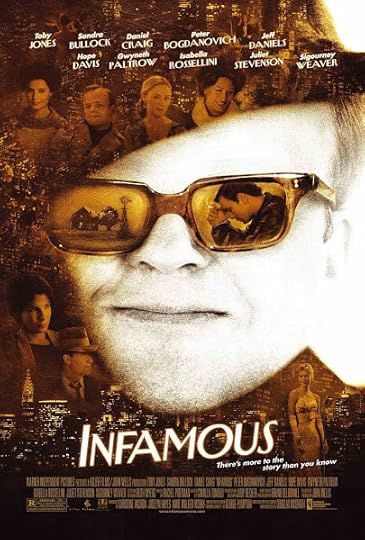 Douglas McGrath, dir.: Infamous (2006)
Douglas McGrath, dir.: Infamous (2006)Toby Jones does, admittedly, look the part. He's very small, and manages almost to incarnate the waspish Capote - in outward appearance, at least. Philip Seymour Hoffman is, by contrast, large and hulking and bears little or no physical resemblance to Capote at all. And yet he, too, succeeded in embodying him for the purposes of the drama in a most mysterious way.
Infamous, dir. & writ. Douglas McGrath (based on the book by George Plimpton) - with Toby Jones, Daniel Craig, Sandra Bullock - (USA, 2006)
Catherine Keener probably made a slightly better Harper Lee than Sandra Bullock did, but that's largely because we're so used to seeing the latter in so many diverse comic and dramatic roles. There's not a lot in it otherwise. Daniel Craig added some necessary energy to the part of the artistic but murderous Perry Smith, but one could argue that what Infamous gained there was lost by its less-than-involving coverage of Capote's jet-setting lifestyle.
Again, plotwise, it's hard to award a clear victory to either film. Actually, it's nice to have both of them: for everyone except studio accountants, that is.
•
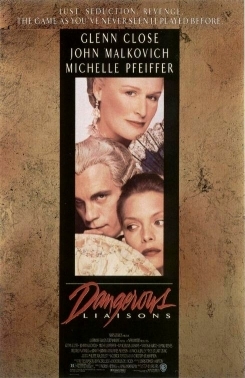 Stephen Frears, dir.: Dangerous Liaisons (1988)
Stephen Frears, dir.: Dangerous Liaisons (1988)The last time I can remember so clear-cut a juxtaposition as this was in the late 1980s, when the immense, Oscar-winning success of Stephen Frears' Dangerous Liaisons succeeding in pipping at the post the painstaking, no-expense-spared shoot of Valmont, Miloš Forman's carefully meditated attempt at a successor to his Amadeus (1984).
Dangerous Liaisons, dir. Stephen Frears, writ. Christopher Hampton (based on the 1782 novel by Choderlos de Laclos) - with John Malkovitch, Glenn Close, Keanu Reeves, Michelle Pfeiffer - (USA, 1988)
Which was the better film in that case? Without a doubt, Dangerous Liaisons. It benefited from a razor-sharp script, based on his own stage-play, by one of my favourite writers, the hugely talented Christopher Hampton. What's more, with the possible exception of Keanu Reeves, still to come into his own as the shaggy action-hero of the John Wick series, all the actors were superb: Uma Thurman, Michelle Pfeiffer, John Malkovitch, not to mention that celebrated bunny-boiler Glenn Close.
Valmont, by contrast, which probably most of you have never heard of, let alone seen, though it does include a truly wonderful performance by Annette Bening, is crippled by a soggy, over-long script - Meg Tilly and Colin Firth, too, fail to shine. It's not that Jean-Claude Carrière - scenarist for Peter Brooks' Mahabharata (1989), amongst innumerable other film and dramatic projects - is a bad writer: on the contrary, in fact. It's just that he isn't quite wicked enough to succeed in conveying the tone of the original novel. Unless, in this case, it was the director who held him back. As one critic put it:
It's a naughty costume dramedy in which the erotic conquests of bored libertines are transformed into children's kissing games.- Rita Kempley, The Washington Post (12/1/90)Ouch! I suppose that the lesson to be learned here is that it's properly focussed dramatic writing that carries a film: not the sumptous nature of the production. In Amadeus Forman had an award-winning play by Peter Shaffer to guide his way. Christopher Hampton played the same role for Stephen Frears. Valmont is all over the place from start to finish - as the strangely unbalanced poster below bears witness:
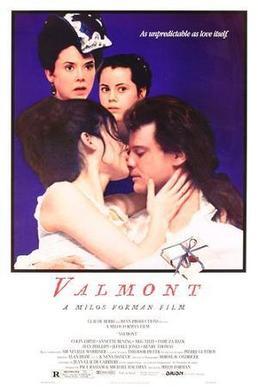 Miloš Forman, dir.: Valmont (1989)
Miloš Forman, dir.: Valmont (1989)
Valmont, dir. Miloš Forman, writ. Jean-Claude Carrière & Miloš Forman (based on the 1782 novel by Choderlos de Laclos) - with Colin Firth, Annette Bening, Meg Tilly - (USA, 1989)
•
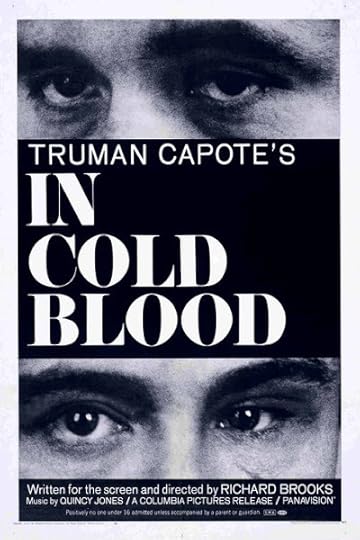 Richard Brooks, dir.: In Cold Blood (1967)
Richard Brooks, dir.: In Cold Blood (1967)There is, of course, another film of the events surrounding In Cold Blood. Richard Brooks' 1967 film noir is an austere police procedural, which pays no attention to the bizarre saga of the book's genesis. It's cold, brutal, and yet - still - very, very watchable: in some ways the best film of the three, as witnessed by the four Oscar nominations it received at the time.
In Cold Blood, dir. & writ. Richard Brooks (based on the book by Truman Capote) - with Robert Blake, Scott Wilson, John Forsythe - (USA, 1967)
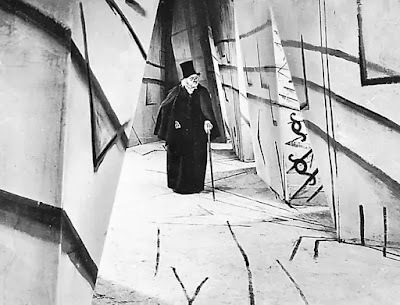 Robert Weine, dir.: The Cabinet of Dr. Caligari (1920)
Robert Weine, dir.: The Cabinet of Dr. Caligari (1920)The 'drawn novel' Capote in Kansas seems more German Expressionist in inspiration. It looks, at times, like a set of outtakes from The Cabinet of Dr. Caligari, complete with crooked lines, strange perspectives, and constant doubling up of the action.
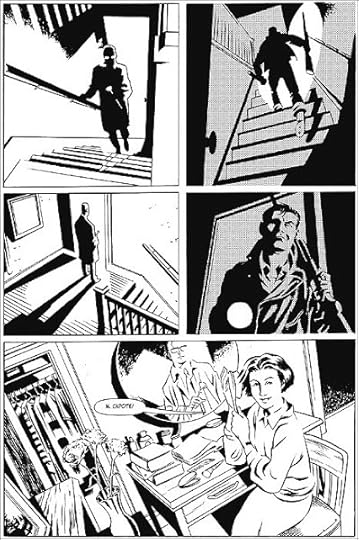 Parks & Samnee: Capote in Kansas (I)
Parks & Samnee: Capote in Kansas (I)Here, for example, we see Capote reenacting the murderer's walk up the stairs to kill the remaining members of the Clutter family.
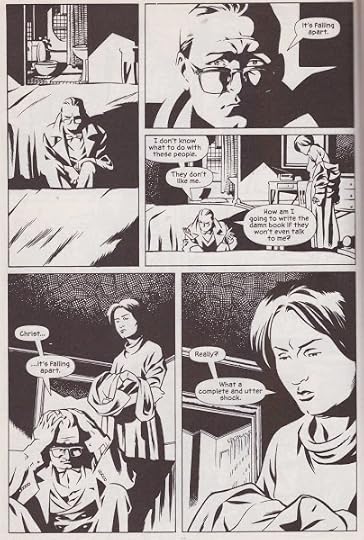 Parks & Samnee: Capote in Kansas (II)
Parks & Samnee: Capote in Kansas (II)Much, too, is made of the relationship between Truman and his childhood friend Harper Lee, sooon to be the world-famous author of To Kill a Mockingbird. There are lots of ghosts there to rattle their respective cages.
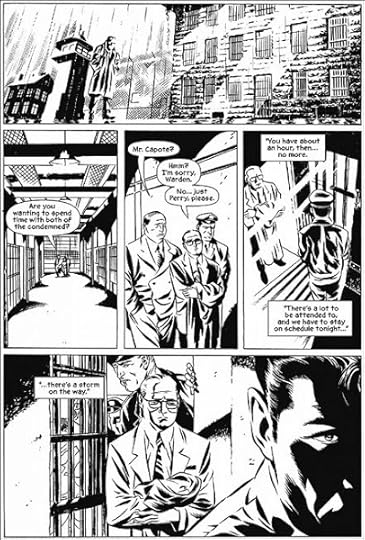 Parks & Samnee: Capote in Kansas (III)
Parks & Samnee: Capote in Kansas (III)And finally, of course, there's the long drawn-out, Gothic endgame of the imprisonment of the two murderers - and Capote's consequent inability to put a full-stop to his book.
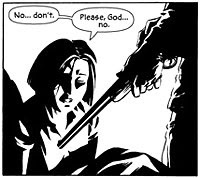 Parks & Samnee: Capote in Kansas (IV)
Parks & Samnee: Capote in Kansas (IV)Ande Parks, understandably, pairs Capote as an unloved child with Capote as a brittle, loveless adult. More controversially, in his version of the story the rather difficult relationship between Capote and his old friend (now rival for literary fame) Harper ('Nell') Lee is doubled with his conversations with the ghost of Nancy Clutter, the muse who enables his whole project.
Interestingly enough, there appears to be another book called Capote in Kansas , published two years after Ande Parks' graphic novel by a certain Kim Powers, and described thus by a disgruntled reviewer:
Capote in Kansas’s thin plot centers on two literary myths, neither of particularly earth-shaking importance to anyone: first, that Capote ghostwrote one-hit-wonder Lee’s iconic novel and second, that Capote became so obsessed with the Kansas murders and its two psychopathic perpetrators that he was unable to write anything of significance after In Cold Blood.- Pop Matters (16/9/2007)
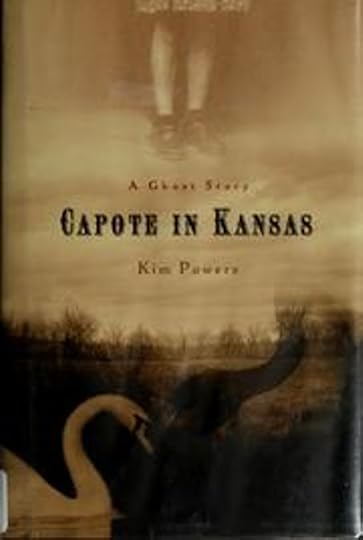 Kim Powers: Capote in Kansas: A Ghost Story (2007)
Kim Powers: Capote in Kansas: A Ghost Story (2007)Is the somewhat tepid response to Powers' ghost story a sign that it might be time, at last, to put the whole matter to bed? It's increasingly obvious that Truman Capote is not simply going to shrivel up and go away, however much his numerous detractors, then and now, may have wished him to do. And anyone who, like me, has recently read through the 700-odd tightly packed pages of the Capote Reader can testify to the immense variety and durability of the author's gifts.
Whether you approve of him as a person or not - and it's hard, at times, to do so - his sheer charisma and charm, particularly apparent in his collected letters, remains undeniable. People are going to keep on reading him for some time to come, I suspect - and not just In Cold Blood, either.
"We're going to hear from that boy: and I don't mean a postcard," as John Turturro puts it so succinctly in Barton Fink . Time to open the doors and let some light in.
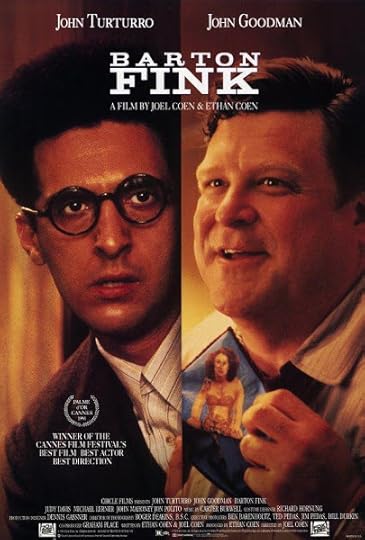 Joel & Ethan Coen, dir. & writ.: Barton Fink (1991)
Joel & Ethan Coen, dir. & writ.: Barton Fink (1991)•
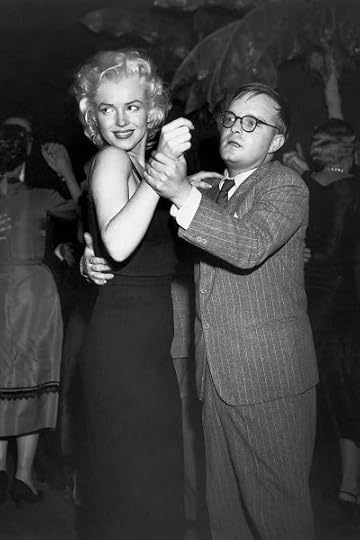 Getty Images: Truman & Marilyn
Getty Images: Truman & MarilynTruman Capote
(1924-1984)
Fiction:
Other Voices, Other Rooms. 1948. Harmondsworth: Penguin, 1964.The Grass Harp. 1951. Harmondsworth: Penguin, 1972.Breakfast at Tiffany’s. 1958. Harmondsworth: Penguin, 1962.Music for Chameleons: New Writing. 1980. Penguin Classics. London: Sphere Books Limited, 1981.Answered Prayers: The Unfinished Novel. 1986. Harmondsworth: Penguin, 1993.The Complete Stories. Introduction by Reynolds Price. 2004. Modern Classics. Harmondsworth: Penguin, 2005.Summer Crossing. Afterword by Alan U. Schwartz. 2005. Modern Classics. Harmondsworth: Penguin, 2006.The Early Stories. Modern Classics. London: Penguin, 2015
Miscellaneous Prose:
In Cold Blood: A True Account of a Multiple Murder and Its Consequences. 1965. Penguin 2682. Harmondsworth: Penguin, 1968.The Dogs Bark: Public People and Private Places. 1973. A Plume Book. New York: The New American Library, Inc., 1977.A Capote Reader. 1987. An Abacus Book. London: Sphere Books Ltd., [1991].
Letters:
Clarke, Gerald, ed. Too Brief a Treat: The Letters of Truman Capote. 2004. Vintage International. New York: Random House, Inc., 2005.
Secondary:
Clarke, Gerald. Capote: A Biography. 1988. Simon & Schuster Paperbacks. New York: Simon & Schuster, Inc., 2010.Plimpton, George. Truman Capote: In Which Various Friends, Enemies, Acquaintances, and Detractors Recall His Turbulent Career. 1998. Picador. London: Macmillan Publishers Ltd., 1999.Parks, Ande. Capote in Kansas: A Drawn Novel. Illustrated by Chris Samnee. Portland, OR: Oni Press, Inc., 2005.Long, Robert Emmet. Truman Capote – Enfant Terrible. Continuum. New York & London: The Continuum International Publishing Group Inc. / Ltd., 2008.
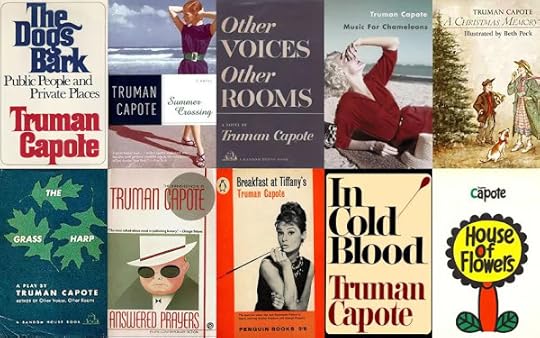 Nasrullah Mambrol: Truman Capote’s Books (2018)
Nasrullah Mambrol: Truman Capote’s Books (2018)•
Published on December 16, 2022 12:44
November 28, 2022
What's up with Emily?
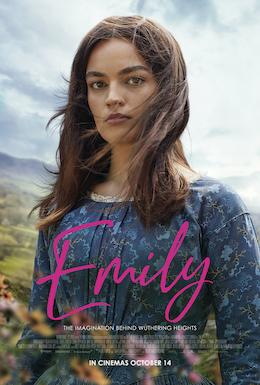
Emily, dir. & writ. Frances O'Connor - with Emma Mackey, Fionn Whitehead, Oliver Jackson-Cohen, Alexandra Dowling, Amelia Gething, Adrian Dunbar, Gemma Jones - (UK / USA, 2022)
Well, quite a bit, really. For a start, she and Branwell seem to be the only writers in the Brontë family, and his efforts aren't much cop - as she brutally informs him halfway through the film. Charlotte is a bespectacled geek who's put aside such childish things, and Anne's a poor waif who sways whichever way the wind is blowing. Which it does quite a bit, it being Yorkshire, and all of them stuck in some nowhere village in the back of beyond.
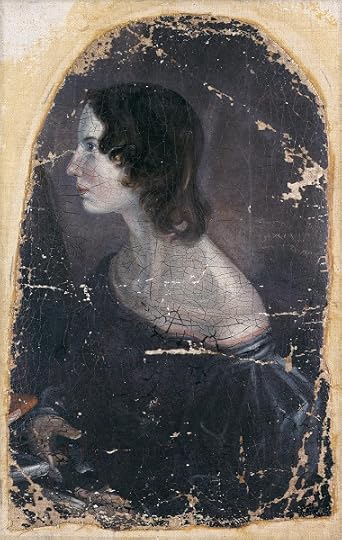 Patrick Branwell Brontë: Emily Brontë (1833)
Patrick Branwell Brontë: Emily Brontë (1833)A bit of opium helps, and some sex with the local curate, but nothing really touches the tired spot till she sits down one day and starts writing on a blank sheet of paper - and lo and behold, there's a novel called Wuthering Heights!
Joking apart, I did greatly enjoy the film, and even found it quite moving in parts, just so long as I could suspend the inner literary historian - never an easy task, I'm afraid. I mean, I can understand eliding over all that complicated business about the three sisters' pseudonyms, Currer, Ellis and Acton Bell (was 'Currer' really a common first name at the time? It does seem a particularly egregious choice).
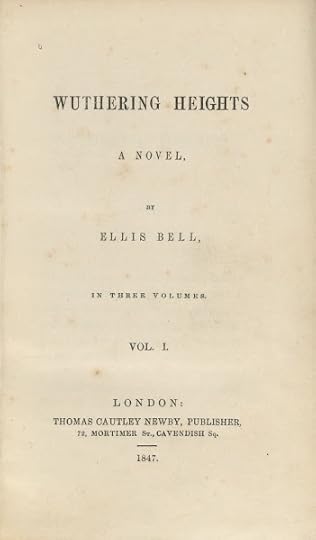 Emily Brontë [as 'Ellis Bell']: Wuthering Heights (1847)
Emily Brontë [as 'Ellis Bell']: Wuthering Heights (1847)So, yes, I can see why, when a small package with a copy of her novel in it finally arrives in Haworth, it has the name 'Emily Brontë' on the titlepage. I don't like it, but I can, I suppose, accept it as a dramatic convenience.
But why was it necessary to edit out the other sisters' part in this literary revolution? Wuthering Heights first appeared in a three-volume package with Anne's novel Agnes Grey: two volumes for Emily, one volume for Anne. And owing to the dithering of their publisher, although it had been accepted earlier, their book didn't actually appear until after Charlotte's Jane Eyre had already come out from another publisher and caused something of a literary sensation.
 Frances O'Connor in Mansfield Park (1999)
Frances O'Connor in Mansfield Park (1999)So the film's decision to show Charlotte sitting down to write her own novel in the wake of Emily's death, and thus - in a sense - carrying on her work, just doesn't seem a necessary fiction to me. I share director (and script-writer) Frances O'Connor's fierce appreciation of Emily's genius - she is, for me, the pick of the bunch, and her novel a masterpiece on a quite different level from Charlotte's and Anne's more numerous works.
I also understand why Emma Mackey, the actor who plays her so spiritedly, feels so protective of her. Emily Brontë is a writer who inspires affection rather than simple respect: her work did, after all, have to make its way against the odds. Charlotte's preface to the second, 'corrected' edition of Wuthering Heights could certainly be said to be damning it with faint praise; and of course in Anne's case she tried to suppress further editions of The Tenant of Wildfell Hall altogether, as she considered its subject matter unbecoming for a lady to acknowledge - let alone write about.
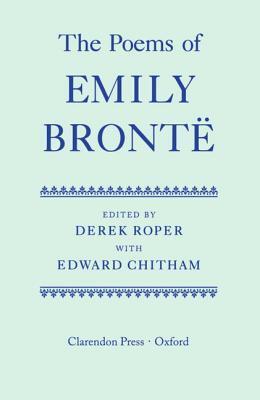 Edward Chitham & Derek Roper, ed.: The Poems of Emily Brontë (1996)
Edward Chitham & Derek Roper, ed.: The Poems of Emily Brontë (1996)Emily was a genius or she was nothing. And I suppose it's for this reason that one can accept this fantasia on themes suggested by the life of Emily Brontë as a legitimate response to her. She's the only one of the three sisters who's ever been regarded as a poet of genius, and the strange, clockwork machinery of her sublime Gothic novel belies any attempts that have been made since to write it off as hysterical melodrama.
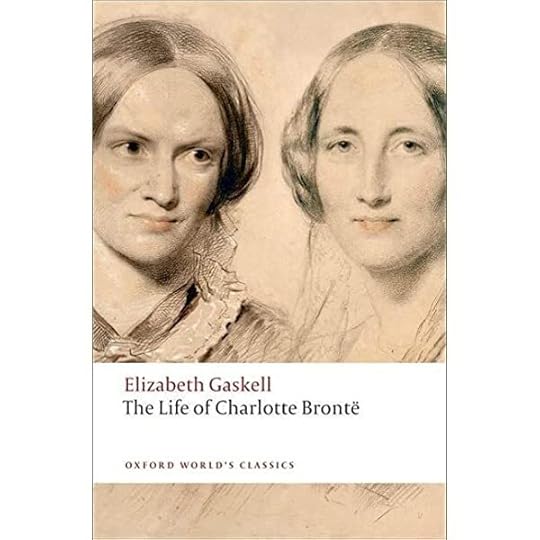 Mrs. Gaskell: The Life of Charlotte Brontë (1857 / 2009)
Mrs. Gaskell: The Life of Charlotte Brontë (1857 / 2009)Mind you, there's also the usual battle of the biographers to take into account. In this case the Brontë mythos (for want of a better word) was established early on by Charlotte's first biographer, the novelist Mrs. Gaskell.
She it was who first revealed the identity of the three sisters, as well as the secrets of their childhood: the massive corpus of juvenilia Charlotte and Branwell produced about Angria, while Emily and Anne collaborated on their own stories of Gondal.
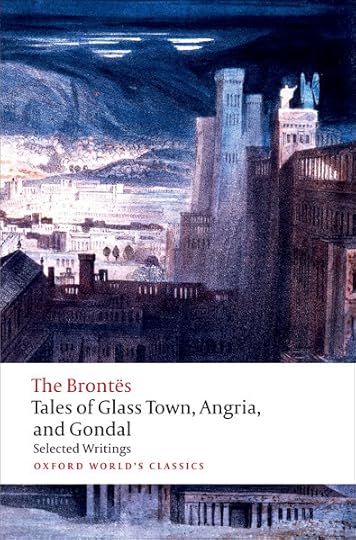 The Brontës: Tales of Glass Town, Angria, and Gondal (2010)
The Brontës: Tales of Glass Town, Angria, and Gondal (2010)The editorial efforts of renowned literary forger Thomas J. Wise to establish a reliable text of the the lives, works and correspondence of the entire family were, I suppose, the next major event in Brontë studies. They culminated in the 21-volume Shakespeare Head edition (1931-38).
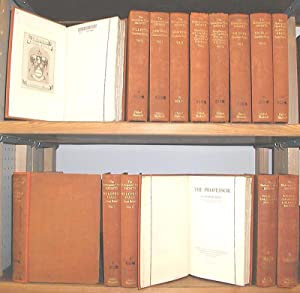 Thomas J. Wise et al., ed.: The Shakespeare Head Brontë (1931-38)
Thomas J. Wise et al., ed.: The Shakespeare Head Brontë (1931-38)This includes four volumes of The Brontës: their lives, friendship and correspondence; two volumes of Miscellaneous and unpublished writings of Charlotte and Patrick Branwell Brontë, three volumes of poetry - Poems of Emily and Anne Brontë, Poems of Charlotte and Patrick Branwell Brontë, and Gondal Poems - as well as 11 volumes of novels and another of bibliography.
Given Wise's subsequent fall from grace, it's a bit distressing that this remains the best and most convenient edition of the family's complex and serried works: though the Oxford English Texts series has gradually superseded most of its component parts.
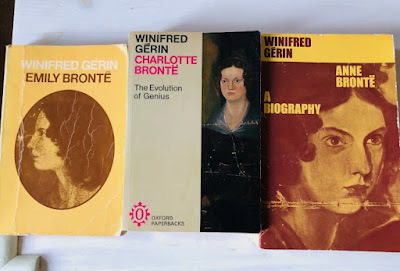 Winifred Gérin: Brontë Biographies (1959-71)
Winifred Gérin: Brontë Biographies (1959-71)The next major player in the saga was, I suppose, Winifred Gérin (1901-1981), who wrote successive biographies of the entire Brontë family and their biographer over a period of twenty-odd years:
Gérin's second husband, John Lock, another Brontë enthusiast, was the co-author, with Canon W. T. Dixon, of A Man of Sorrow: The Life, Letters, and Times of the Rev. Patrick Brontë, 1777-1861 (1965), thus completing the tally.
Anne Brontë (1959)
Branwell Brontë (1961)
Charlotte Brontë: The Evolution of Genius (1967)
Emily Brontë: A Biography (1971)
The Brontës (1973)
Elizabeth Gaskell: A Biography (1976)
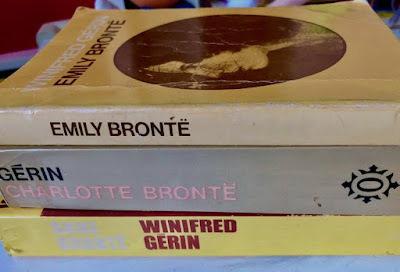
Gérin, who lived in Haworth for many years, and regarded this as an essential foundation for insight into their works, approached the sisters with a blend of sympathy and indefatigable research into the physical context of their lives. She also, it must be said, provided a great deal of information about them which had not been available before. One reviewer of her prize-winning biography of Charlotte did, however, criticise it for lacking "the Yorkshire pith and terseness of the Brontë style."
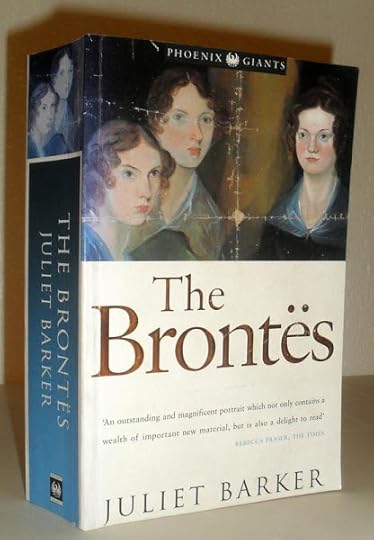 Juliet Barker: The Brontës (1994)
Juliet Barker: The Brontës (1994)Certainly that's the attitude taken by the sisters' next major biographer, Juliet Barker. She attempts to dispel the myths which have grown up around the family with a mixture of hard-headed scepticism and minute attention to detail. Emily, in particular, gets a bit of a caning in her account of the hotbed of genius that was the Brontë household.
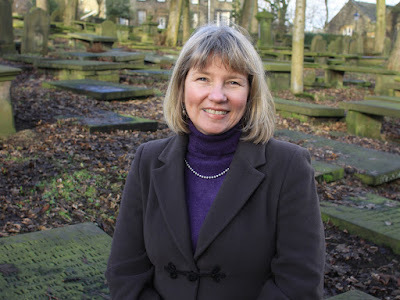 Helen Burrow: Juliet Barker (1958- )
Helen Burrow: Juliet Barker (1958- )So who should we believe? Mrs. Gaskell, who had the advantage of actually meeting and befriending Charlotte shortly before her death? Winifred Gérin, who clearly filled some inner need in herself by living on the Haworth moors with her imaginary friends, the sisters and their circle? Or Juliet Barker, whose undisguised scorn for her (allegedly) more credulous predecessors makes one wonder at times just who appointed her chief custodian of their posthumous reputations?
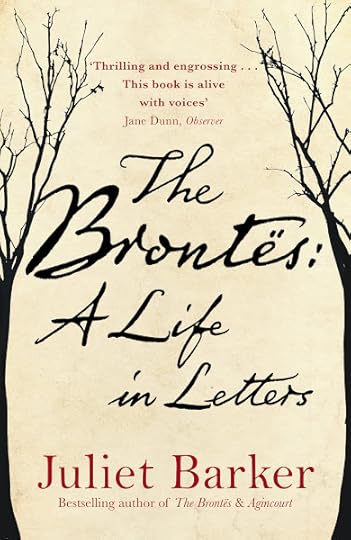 Juliet Barker: The Brontës: A Life in Letters (1997 / 2016)
Juliet Barker: The Brontës: A Life in Letters (1997 / 2016)The literary donnybrook continues, as such things tend to do. In the meantime, though, we have six fascinating novels to read (and reread) by the three sisters - at least two of them, Jane Eyre and Wuthering Heights, undoubted masterpieces. We also have a substantial number of poems by Emily: enough to guarantee her place among the English poets.
We also - as I discussed in an earlier post - have the ongoing revelation of the sheer extent and variety of the Brontës' surviving juvenilia. The various overlapping editions of that have now begun to rival editions of their own mature works.
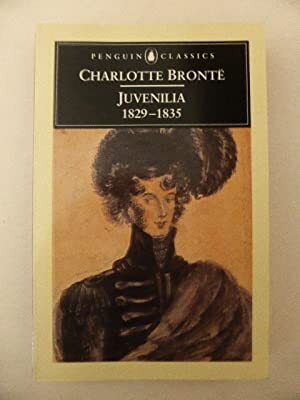 Charlotte Brontë: Juvenilia 1829-1835, ed. Juliet Barker (1996)
Charlotte Brontë: Juvenilia 1829-1835, ed. Juliet Barker (1996)•
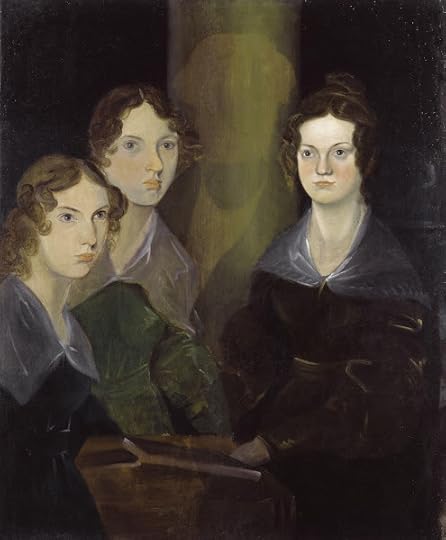 Patrick Branwell Brontë: The Brontë Sisters (c.1834)
Patrick Branwell Brontë: The Brontë Sisters (c.1834)The Brontës
(1815-1855)
(1816-1855) (1817-1848) (1818-1848) (1820-1849)
[titles I own are marked in bold]:
•
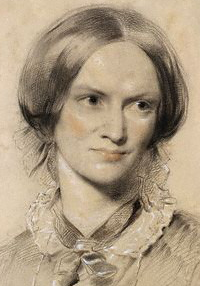 George Richmond: Charlotte Brontë (1850)
George Richmond: Charlotte Brontë (1850)(1816-1855)
Juvenilia:
Stories & Poems (c.1830-1839)
The Young Men's Magazine, Number 1 – 3 (August 1830)A Book of Ryhmes (1829)The SpellThe SecretLily HartThe FoundlingThe History of the YearIncluded in: The Professor; Tales from Angria; Emma: A Fragment / Together with a Selection of Poems by Charlotte, Emily and Anne Brontë. Ed. Phyllis Bentley. 1954. Collins Gift Classics. London: Collins, 1976. A Romantic TaleIncluded in: The Professor; Tales from Angria; Emma: A Fragment / Together with a Selection of Poems by Charlotte, Emily and Anne Brontë. Ed. Phyllis Bentley. 1954. Collins Gift Classics. London: Collins, 1976. Characters of Celebrated MenIncluded in: The Professor; Tales from Angria; Emma: A Fragment / Together with a Selection of Poems by Charlotte, Emily and Anne Brontë. Ed. Phyllis Bentley. 1954. Collins Gift Classics. London: Collins, 1976. Albion and MarinaIncluded in: The Professor; Tales from Angria; Emma: A Fragment / Together with a Selection of Poems by Charlotte, Emily and Anne Brontë. Ed. Phyllis Bentley. 1954. Collins Gift Classics. London: Collins, 1976. The BridalIncluded in: The Professor; Tales from Angria; Emma: A Fragment / Together with a Selection of Poems by Charlotte, Emily and Anne Brontë. Ed. Phyllis Bentley. 1954. Collins Gift Classics. London: Collins, 1976. Tales of the IslandersTales of Angria (1838–1839)Tales of Angria. 1837-39. Ed. Heather Glen. Penguin Classics. London: Penguin, 2006.Passing EventsIncluded in: Five Novelettes. Transcribed from the Original Manuscripts and Edited by Winifred Gérin. London: The Folio Press, 1971. JuliaIncluded in: Five Novelettes. Transcribed from the Original Manuscripts and Edited by Winifred Gérin. London: The Folio Press, 1971. Mina LauryIncluded in: Five Novelettes. Transcribed from the Original Manuscripts and Edited by Winifred Gérin. London: The Folio Press, 1971.Included in: The Professor; Tales from Angria; Emma: A Fragment / Together with a Selection of Poems by Charlotte, Emily and Anne Brontë. Ed. Phyllis Bentley. 1954. Collins Gift Classics. London: Collins, 1976.Included in: Tales of Angria. 1837-39. Ed. Heather Glen. Penguin Classics. London: Penguin, 2006. Stancliffe's HotelStancliffe's Hotel. 1837-39. Ed. Heather Glen. Penguin Classics. London: Penguin, 2003.Included in: Tales of Angria. 1837-39. Ed. Heather Glen. Penguin Classics. London: Penguin, 2006. The Duke of ZamornaIncluded in: Tales of Angria. 1837-39. Ed. Heather Glen. Penguin Classics. London: Penguin, 2006.Henry HastingsIncluded in: Five Novelettes. Transcribed from the Original Manuscripts and Edited by Winifred Gérin. London: The Folio Press, 1971.Included in: Tales of Angria. 1837-39. Ed. Heather Glen. Penguin Classics. London: Penguin, 2006. Caroline VernonIncluded in: Five Novelettes. Transcribed from the Original Manuscripts and Edited by Winifred Gérin. London: The Folio Press, 1971.Included in: Tales of Angria. 1837-39. Ed. Heather Glen. Penguin Classics. London: Penguin, 2006. The Roe Head Journal FragmentsIncluded in: Tales of Angria. 1837-39. Ed. Heather Glen. Penguin Classics. London: Penguin, 2006. Something about ArthurSomething about Arthur. Ed. Christine Alexander. The University of Texas at Austin: Humanities Research Center, 1981. My Angria and the AngriansIncluded in: The Professor; Tales from Angria; Emma: A Fragment / Together with a Selection of Poems by Charlotte, Emily and Anne Brontë. Ed. Phyllis Bentley. 1954. Collins Gift Classics. London: Collins, 1976. Farewell to AngriaIncluded in: The Professor; Tales from Angria; Emma: A Fragment / Together with a Selection of Poems by Charlotte, Emily and Anne Brontë. Ed. Phyllis Bentley. 1954. Collins Gift Classics. London: Collins, 1976. [as Lord Charles Albert Florian Wellesley] The Green Dwarf, A Tale of the Perfect Tense (1833)
The Professor; Tales from Angria ['The History of the Year' / 'A Romantic Tale' / 'Characters of Celebrated Men' / 'Albion and Marina' / 'The Bridal' / 'My Angria and the Angrians' / 'Mina Laury' / 'Farewell to Angria']; Emma: A Fragment / Together with a Selection of Poems by Charlotte, Emily and Anne Brontë. Ed. Phyllis Bentley. 1954. Collins Gift Classics. London: Collins, 1976.Five Novelettes: Passing Events; Julia; Mina Laury; Henry Hastings; Caroline Vernon. Transcribed from the Original Manuscripts and Edited by Winifred Gérin. London: The Folio Press, 1971.Something about Arthur. Transcribed from the Original Manuscript and Edited by Christine Alexander. The University of Texas at Austin: Humanities Research Center, 1981.The Juvenilia of Jane Austen and Charlotte Brontë. Ed. Frances Beer. Penguin Classics. Harmondsworth: Penguin, 1986.Alexander, Christine, ed. An Edition of the Early Writings of Charlotte Brontë. 3 vols. Shakespeare Head Press. Oxford & New York: Basil Blackwell, 1987-91.Volume I: The Glass Town Saga, 1826-1832 (1987)Volume II: The Rise of Angria, 1833-1835. Part 1: 1833-1834 (1991)Volume II: The Rise of Angria, 1833-1835. Part 2: 1834-1835 (1991) Juvenilia 1829-1835. Ed. Juliet Barker. Penguin Classics. Harmondsworth: Penguin, 1996.Stancliffe's Hotel. 1837-39. Ed. Heather Glen. Penguin Classics. London: Penguin, 2003.Tales of Angria: Mina Laury; Stancliffe's Hotel; The Duke of Zamorna; Henry Hastings; Caroline Vernon; The Roe Head Journal Fragments. 1837-39. Ed. Heather Glen. Penguin Classics. London: Penguin, 2006.
Novels:
[as 'Currer Bell'] Jane Eyre (1847)Jane Eyre. 1847. Introduction by Margaret Lane. Everyman’s Library, 287. 1908. London: J. M. Dent & Sons / New York: E. P. Dutton & Co., 1953.Jane Eyre. 1847. Introduction by Bonamy Dobrée. 1953. Collins Gift Classics. London: Collins, 1977. [as 'Currer Bell'] Shirley (1849)Shirley. 1849. Introduction by Phyllis Bentley. 1953. Collins Gift Classics. London: Collins, 1977. [as 'Currer Bell'] Villette (1853)Villette. 1853. Introduction by Phyllis Bentley. 1953. Collins Gift Classics. London: Collins, 1975. The Professor (1857)Included in: The Professor; Tales from Angria; Emma: A Fragment / Together with a Selection of Poems by Charlotte, Emily and Anne Brontë. Ed. Phyllis Bentley. 1954. Collins Gift Classics. London: Collins, 1976. Emma: A Fragment (1860)Included in: The Professor; Tales from Angria; Emma: A Fragment / Together with a Selection of Poems by Charlotte, Emily and Anne Brontë. Ed. Phyllis Bentley. 1954. Collins Gift Classics. London: Collins, 1976.
Poetry:
Poems by Currer, Ellis, and Acton Bell (1846)Included in: The Professor; Tales from Angria; Emma: A Fragment / Together with a Selection of Poems by Charlotte, Emily and Anne Brontë. Ed. Phyllis Bentley. 1954. Collins Gift Classics. London: Collins, 1976.
Secondary:
Gaskell, Elizabeth. The Life of Charlotte Brontë. 1857. Ed. Alan Shelston. Penguin English Library. Harmondsworth: Penguin, 1975.Gérin, Winifred. Charlotte Brontë: The Evolution of Genius. Oxford: Clarendon Press, 1967.
•
Jane Eyre, dir. Cary Fukunaga, writ. Moira Buffini (based on the novel by Charlotte Brontë) – with Mia Wasikowska, Michael Fassbender – (USA, 2011).
[There are, of course, many adaptations of Jane Eyre. This is definitely one of the better ones, though possibly the most interesting of all is Val Lewton's I Walked with a Zombie (1943).]
 Cary Fukunaga, dir.: Jane Eyre (2011)
Cary Fukunaga, dir.: Jane Eyre (2011)•
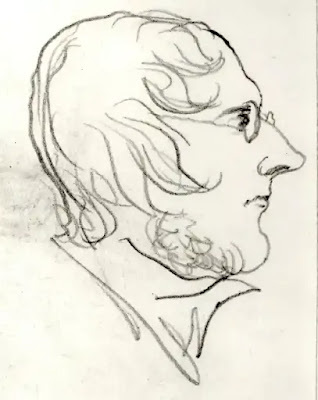 Branwell Brontë: Self-portrait (c.1840)
Branwell Brontë: Self-portrait (c.1840)(1817-1848)
Juvenilia:
Stories & Poems (c.1830-1839)
Battell BookThe Glass TownThe Young Men's Magazine, Number 1 – 3 (August 1830)The Revenge A TradgedyThe History of the Young Men from Their First Settlement to the Present Time (1829–1831)The Fate of ReginaThe Liar DetectedOde on the Celebration of the Great African GamesThe Pirate A TaleReal Life in Verdopolis, volume 1–2The Politics of VerdopolisAn Angrain Battle SongPercy's Musings upon the Battle of EdwardstonMary's PrayerAn Historical Narrative of the War of EncroachmentAn Historical Narrative of the War of AgressionAngria and the AngriansLetters from an Englishman (1830–1832)Life of Warner Howard WarnerTales of Angria (1838–1839)Tales of Angria. 1837-39. Ed. Heather Glen. Penguin Classics. London: Penguin, 2006.
Poetry:
Winnifrith, Tom, ed. The Poems of Patrick Branwell Brontë: A New Annotated and Enlarged Edition of the Shakespeare Head Brontë. The Shakespeare Head Press. Oxford: Basil Blackwell Publisher Limited, 1983.
Works:
The Works of Patrick Branwell Brontë. Ed. Victor A. Neufeldt. 3 vols. New York: Garland Publishing, 1997-1999.
Secondary:
du Maurier, Daphne. The Infernal World of Branwell Brontë. 1960. Harmondsworth: Penguin, 1972.Gérin, Winifred. Branwell Brontë: A Biography. 1961. A Radius Book. London: Hutchinson & Co (Publishers ) Ltd., 1972.
•
Wainwright, Sally. To Walk Invisible (BBC, 2016)
[A number of actors have now had the dubious distinction of playing poor Branwell Brontë, among them Michael Kitchen in The Brontës of Haworth (1973), Adam Nagaitis in To Walk Invisible (2016), and now, in Emily (2022), Fionn Whitehead.]
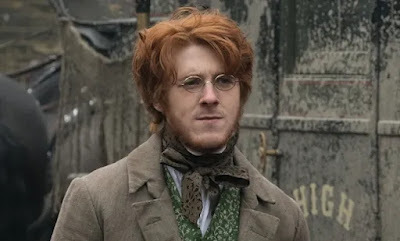 To Walk Invisible: Adam Nagaitis as Branwell Brontë (2016)
To Walk Invisible: Adam Nagaitis as Branwell Brontë (2016)•
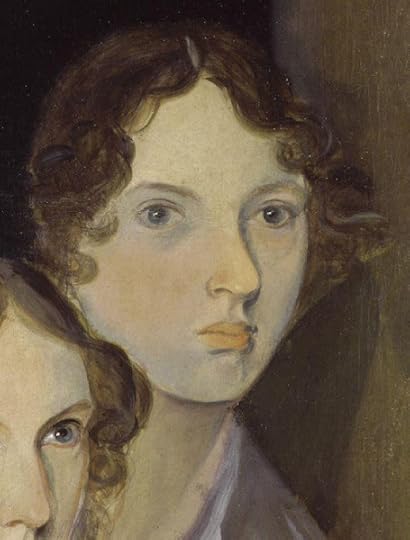 Branwell Brontë: Emily Brontë (c.1843)
Branwell Brontë: Emily Brontë (c.1843)(1818-1848)
Novels:
[as 'Ellis Bell'] Wuthering Heights: A Novel (1847)Wuthering Heights. An Authoritative Text, with Essays in Criticism. 1847. Ed. William M. Sale, Jr. A Norton Critical Edition. New York & London: W. W. Norton & Company, 1963.Wuthering Heights. 1847. Introduction by Bonamy Dobrée. 1953. Collins Gift Classics. London: Collins, 1977.
Poetry:
Poems by Currer, Ellis, and Acton Bell (1846)Included in: The Professor; Tales from Angria ['The History of the Year' / 'A Romantic Tale' / 'Characters of Celebrated Men' / 'Albion and Marina' / 'The Bridal' / 'My Angria and the Angrians' / 'Mina Laury' / 'Farewell to Angria']; Emma: A Fragment / Together with a Selection of Poems by Charlotte, Emily and Anne Brontë. Ed. Phyllis Bentley. 1954. Collins Gift Classics. London: Collins, 1976. Emily Jane Brontë: The Complete Poems. Ed. C. W. Hatfield. 1941. New York & London: Columbia University Press & Oxford University Press, 1963.The Complete Poems of Emily Brontë. Ed. Philip Henderson. London: The Folio Society, 1951.Gondal's Queen: A Novel in Verse by Emily Brontë. Ed. Fannie Elizabeth Ratchford. Austin: University of Texas Press / London: Thomas Nelson and Sons Limited, 1955.The Complete Poems. Ed. Janet Gezari. Penguin English Poets. Harmondsworth: Penguin, 1992.
Secondary:
Gérin, Winifred. Emily Brontë: A Biography. Oxford: Clarendon Press, 1971.
•
Wuthering Heights, dir. & writ. Elisaveta Abrahall (based on the novel by Emily Brontë) – with Paul Eryk Atlas & Sha'ori Morris – (UK, 2018).
[There's a huge number of film adaptations of Wuthering Heights. Wikipedia lists at least 13, though it misses the one pictured below. Probably the most memorable remains William Wyler's 1939 movie, with Laurence Olivier and Merle Oberon. Despite its obvious lacunae, it's attained an almost mythic status among cinéastes.]
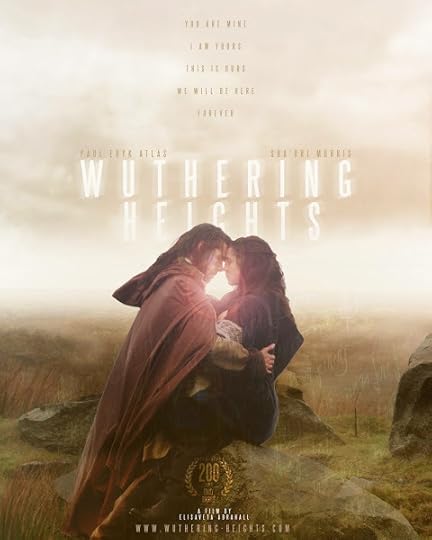 Elisaveta Abrahall, dir.: Wuthering Heights (2018)
Elisaveta Abrahall, dir.: Wuthering Heights (2018)•
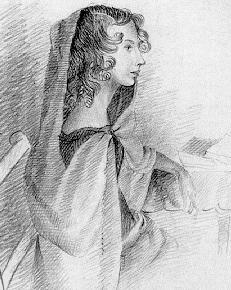 Charlotte Brontë: Anne Brontë (c.1834)
Charlotte Brontë: Anne Brontë (c.1834)(1820-1849)
Novels:
[as 'Acton Bell'] Agnes Grey (1847)Included in: The Tenant of Wildfell Hall & Agnes Grey. 1848 & 1847. Introduction by Phyllis Bentley. 1954. Collins Gift Classics. London: Collins, 1977. [as 'Acton Bell'] The Tenant of Wildfell Hall (1848)Included in: The Tenant of Wildfell Hall & Agnes Grey. 1848 & 1847. Introduction by Phyllis Bentley. 1954. Collins Gift Classics. London: Collins, 1977.
Poetry:
Poems by Currer, Ellis, and Acton Bell (1846)Included in: The Professor; Tales from Angria ['The History of the Year' / 'A Romantic Tale' / 'Characters of Celebrated Men' / 'Albion and Marina' / 'The Bridal' / 'My Angria and the Angrians' / 'Mina Laury' / 'Farewell to Angria']; Emma: A Fragment / Together with a Selection of Poems by Charlotte, Emily and Anne Brontë. Ed. Phyllis Bentley. 1954. Collins Gift Classics. London: Collins, 1976.
Secondary:
Gérin, Winifred. Anne Brontë. London: Thomas Nelson, 1959.
•
The Tenant of Wildfell Hall, dir. Mike Barker, writ. David Nokes & Janet Barron (based on the novel by Anne Brontë) – with Toby Stephens, Tara Fitzgerald, Rupert Graves – (UK, 1996).
[There are at least two television adaptations of The Tenant of Wildfell Hall, the one pictured below and a 1968 version as well. It's also been adapted for the stage on a number of occasions.]
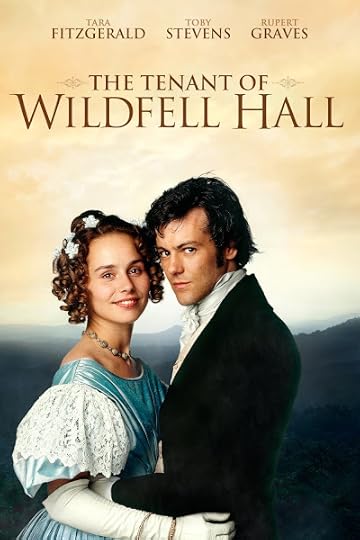 Mike Barker, dir.: The Tenant of Wildfell Hall (1996)
Mike Barker, dir.: The Tenant of Wildfell Hall (1996)•
 The Brontës (Collins Gift Classics slipcase set) (1982-86)
The Brontës (Collins Gift Classics slipcase set) (1982-86)The Works of Charlotte, Emily and Anne Brontë. Illustrations by A. S. Greig. Ornaments by T. C. Tilney. 12 vols. 1893. London: J. M. Dent, 1895-96.Jane Eyre, by Currer Bell (Charlotte Brontë). Vol. 1 of 2. Introduction by F. J. S. (1896)Jane Eyre. Vol. 2 of 2 (1896)Shirley, by Currer Bell (Charlotte Brontë). Vol. 1 of 2. Introduction by F. J. S. (1896)Shirley. Vol. 2 of 2 (1896)[Villette, by Currer Bell (Charlotte Brontë). Vol. 1 of 2.][Villette. Vol. 2 of 2.]The Professor, by Currer Bell (Charlotte Brontë). Introduction by F. J. S. 1893 (1895)Poems of Currer, Ellis and Acton Bell, by Charlotte, Emily and Anne Brontë. With Cottage Poems by Patrick Brontë, Introduction by F. J. S. (1896)[Wuthering Heights, by Ellis Bell (Emily Brontë). Vol. 1 of 2. Introduction by F. J. S.]Wuthering Heights. Vol. 2 of 2. Agnes Grey, by Acton Bell (Anne Brontë). Introduction by F. J. S. (1896)The Tenant of Wildfell Hall, by Acton Bell (Anne Brontë). Vol. 1 of 2. Introduction by F. J. S. (1893)The Tenant of Wildfell Hall, by Acton Bell (Anne Brontë). Vol. 2 of 2 (1893)
The Brontës. Collins Gift Classics. 1953-54. London: Collins, 1975-1977.Brontë, Anne. The Tenant of Wildfell Hall & Agnes Grey. 1848 & 1847. Introduction by Phyllis Bentley. 1954 (1977)Brontë, Charlotte. Jane Eyre. 1847. Introduction by Bonamy Dobrée. 1953 (1977)Brontë, Charlotte. Shirley. 1849. Introduction by Phyllis Bentley. 1953 (1977)Brontë, Charlotte. Villette. 1853. Introduction by Phyllis Bentley. 1953 (1975)Brontë, Charlotte. The Professor; Tales from Angria ['The History of the Year' / 'A Romantic Tale' / 'Characters of Celebrated Men' / 'Albion and Marina' / 'The Bridal' / 'My Angria and the Angrians' / 'Mina Laury' / 'Farewell to Angria']; Emma: A Fragment / Together with a Selection of Poems by Charlotte, Emily and Anne Brontë. Ed. Phyllis Bentley. 1954 (1976)Brontë, Emily. Wuthering Heights. 1847. Introduction by Bonamy Dobrée. 1953 (1977)
The Brontës. Tales of Glass Town, Angria, and Gondal: Selected Writings. Ed. Christine Alexander. Oxford World's Classics. Oxford: Oxford University Press, 2010.
•
Barker, Juliet. The Brontës. 1994. A Phoenix Giant Paperback. London: Orion Books Ltd., 1995.Barker, Juliet. The Brontës: A Life in Letters. London: Viking, 1997.Barker, Juliet. The Brontës: A Life in Letters. 1997. Little, Brown. London: Little, Brown Book Group, 2016.Bentley, Phyllis. The Brontës and Their World. 1969. London: Thames & Hudson, 1974.Clarke, Pauline. The Twelve and the Genii. Illustrated by Cecil Leslie. 1962. Faber Paper Covered Editions. London: Faber, 1970.Gérin, Winifred. The Brontës. London: Longmans, 1973.Gérin, Winifred. Elizabeth Gaskell: A Biography. 1976. Oxford Paperbacks. Oxford: Oxford University Press, 1980.Ratchford, Fannie Elizabeth. The Brontës’ Web of Childhood. 1941. New York: Columbia University Press, 1949.
•
The Brontës of Haworth: 4-part miniseries, dir. Marc Miller, writ. Christopher Fry – with Alfred Burke, Vickery Turner, Ann Penfold, Barbara Leigh-Hunt, Michael Kitchen, Rosemary McHale – (UK, 1973). 2-DVD set.
[Despite having been made almost fifty years ago, The Brontës of Haworth remains a remarkably convincing version of the family story. A good deal of this has to be attributed to renowned British playwright Christopher Fry's superlative script. It's an exceptionally grim and depressing tale, mind you - and the series makes no attempt to disguise this. The recurring motif of the sisters walking and talking around the kitchen table until finally there's only Charlotte left is still quite haunting. Fry also does a good job of humanising the often overlooked Anne.]
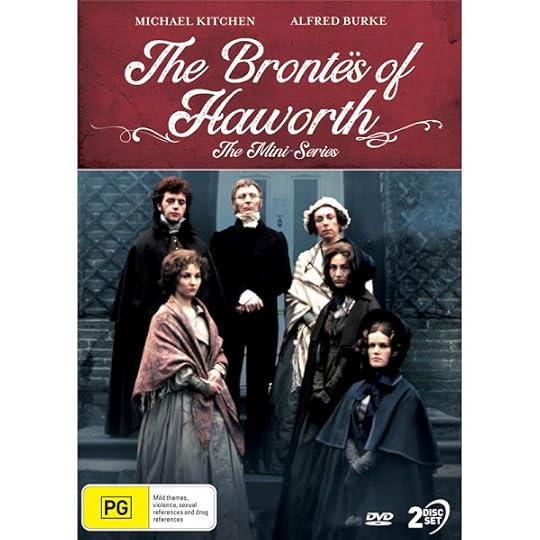 The Brontës of Haworth (1973)
The Brontës of Haworth (1973)•
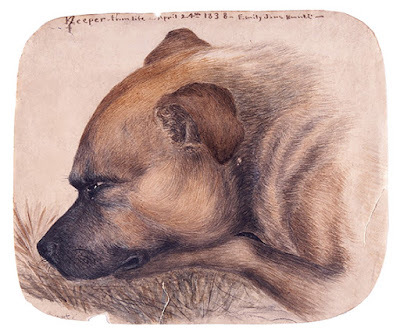 Emily Brontë: Keeper - from life (1838)
Emily Brontë: Keeper - from life (1838)
Published on November 28, 2022 13:43
November 20, 2022
28 Days Haunted & Other Spooky TV Shows
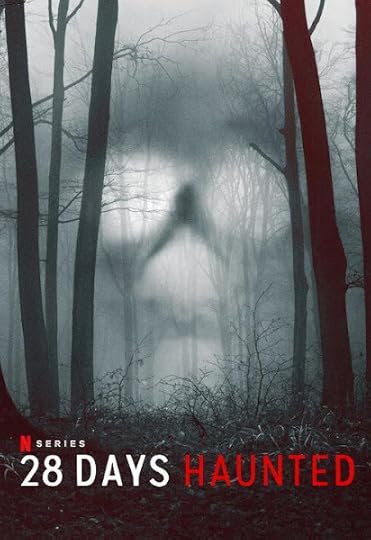 28 Days Haunted (2022)
28 Days Haunted (2022)Don't get me wrong. I hugely enjoyed The Conjuring (2013) - and its 2016 sequel, based on the famous Enfield poltergeist case in London in the late 1970s.
The sympathetic portrayal of self-described demonologists Ed and Lorraine Warren in both movies was, admittedly, a little troubling, but then the same could be said of many Hollywood films. If they weren't, in real life, quite the sweethearts portrayed by Patrick Wilson and Vera Farmiga, then surely some dramatic licence must be conceded.
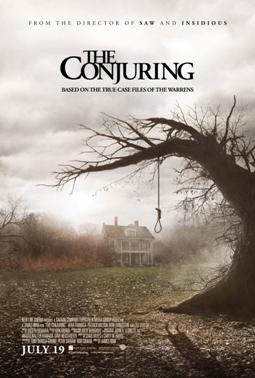
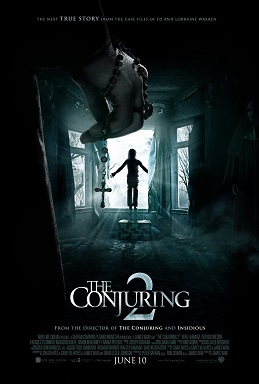 The Conjuring Series
The Conjuring SeriesRecently, however, Bronwyn and I have been watching the Netflix Reality TV Series 28 Days Haunted , which accords the Warrens almost folk-hero status as occult visionaries. The show purports to be a rigorous test of their theory that there's a period of 28 days (based on lunar cycles, perhaps?) which is necessary to 'break through' in any investigation of a haunting.
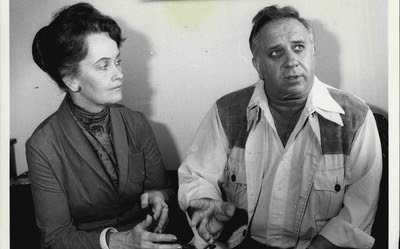 Sydney Morning Herald: Ed & Lorraine Warren
Sydney Morning Herald: Ed & Lorraine WarrenNeedless to say, the theory passes the test with flying colours, and succeeds, too, in providing viewers such as ourselves with riveting footage of husky Americans with video cameras running around corridors screaming their heads off.
Is this serious paranormal research? Well, of course not. Is it particularly entertaining? Shamefully, the answer would have to be yes.
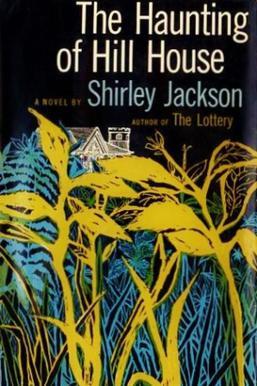 Shirley Jackson: The Haunting of Hill House (1959)
Shirley Jackson: The Haunting of Hill House (1959)It was the late lamented Shirley Jackson who first propounded the thesis that the most fascinating thing about haunted house investigations is the people who undertake them. The interaction between the various eccentric personalities on display far outweighs in interest any alleged 'findings' they may obtain.
The result, as you no doubt already know, was her classic novel The Haunting of Hill House (appallingly, shamefully, misadapted by clunkster extraordinaire Mike Flanagan in his travesty of a TV series of the same name).
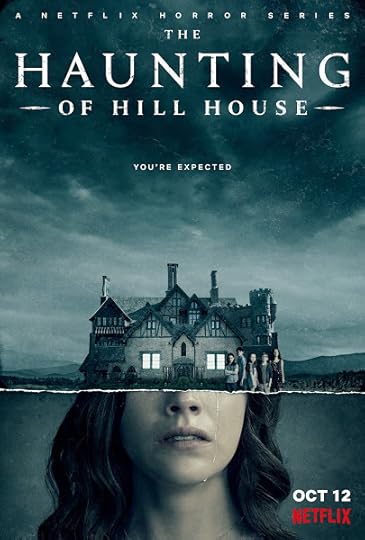 Mike Flanagan: The Haunting of Hill House (2018)
Mike Flanagan: The Haunting of Hill House (2018)•
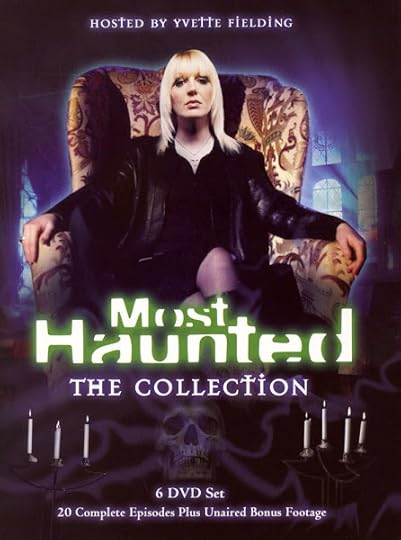 1 - Most Haunted (2002- )
1 - Most Haunted (2002- )Such is my fascination with the genre, that I've inveigled poor Bronwyn into suffering through a whole slew of True Ghost Stories on TV. Let's see, there was the long-running British show Most Haunted , hosted by Yvette Fielding - we watched a huge amount of that.
Derek Acorah, the resident psychic, was worth the price of entry on his own. I still remember him channelling 'Cloggie', the spirit haunting a ghost train ride in, I think, Brighton.
Convincing? Not very, but there was also much entertainment to be had from watching the host, Yvette, getting steadily more and more terrified as it got darker and darker. Seldom did she last in any 'haunted' room for more than a minute or two ...
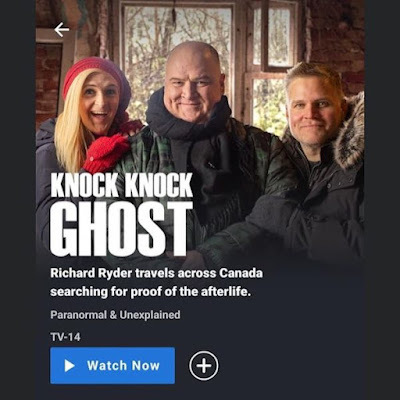 2 - Knock Knock Ghost (2014- )
2 - Knock Knock Ghost (2014- )Canadian TV show Knock Knock Ghost is more of pisstake of such hand-held camera reality shows than a serious investigation of hauntings. It can be very amusing - if a trifle one-note - particularly the struggle of host Richard Ryder's assistant Brie Larsen to achieve some on-camera recognition for her endless travails.
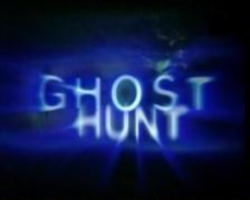 3 - Ghost Hunt (2005-6)
3 - Ghost Hunt (2005-6)Continuing our international coverage, Kiwi TV programme Ghost Hunt was a surprisingly successful attempt to showcase various local pyschic hotspots, including Larnach Castle in Dunedin, the Waitomo Caves Hotel, and the Kinder House in Parnell.
The show's basic methodology was to have two investigators, Carolyn Taylor and Michael Hallows, wandering around in the dark with head-mounted cameras, with a subsequent analysis (i.e. digital tweaking) of their footage by computer whiz Brad Hills. I loved it. I wish they'd made a lot more episodes.
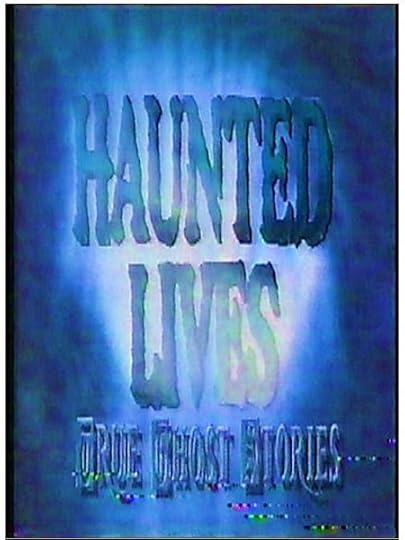 4 - Haunted Lives: True Ghost Stories (1991-95)
4 - Haunted Lives: True Ghost Stories (1991-95)For convenience's sake, it seems best to sample some of the many American contributions to the genre in chronological order.
We'll start with Haunted Lives: True Ghost Stories , which I used to watch on idle afternoons back in the 1990s. Hosted first by Leonard Nimoy, then Stacey Keach, and directed by Tobe Hooper, the stories were first restaged with actors. Interviews were then conducted with the actual victims.
A certain lack of verisimilitude was therefore inevitable. Some of the accounts were very interesting, though.
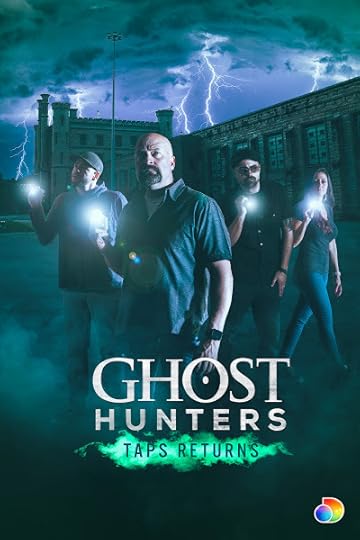 5 - Ghost Hunters (2004- )
5 - Ghost Hunters (2004- )Despite its longevity, and its status as a pioneer in the field, I'm afraid I've never been able to warm to Ghost Hunters . It's hard to see how the investigators can maintain their enthusiasm for each uneventful night in yet another banal setting. Their pop psychology explanations of the 'phenomena' they discover are similarly unexciting. It seems more like an ongoing pension plan for the participants than a legitimate, edge-of-your-seat reality series.
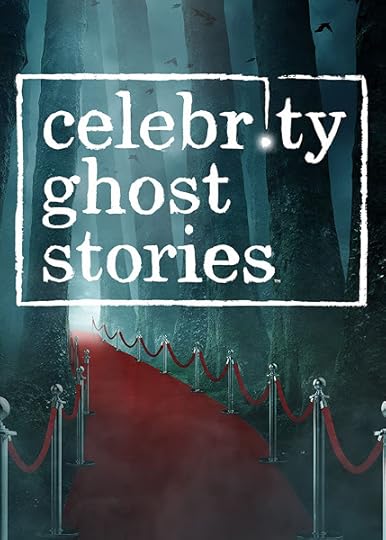 6 - Celebrity Ghost Stories (2008- )
6 - Celebrity Ghost Stories (2008- )I feel a bit ashamed at having watched so many of these Celebrity Ghost Stories . As I recall, the best one of all was provided by David Carradine, about his partner's ex's ghost, and his participation in their lives. Given that Carradine died shortly after filming it, it had a certain punch to it that the others tend to lack.
A few of the participants - C. Thomas Howell, I mean you - seem just to be taking the piss with obviously made-up tales designed to bolster up their flagging careers, but for the most part they're surprisingly convincing. I'd go so far as to say that one or two of them were genuinely disturbing.
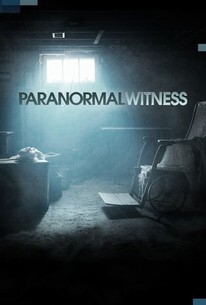 7 - Paranormal Witness (2011- )
7 - Paranormal Witness (2011- )The sheer number of stories presented on Paranormal Witness over the years - albeit with 'reconstructions' of the principal events doubling with the victims' retellings of their experiences - have combined to give it a certain air of authenticity.
How could so many people bother to conspire to create such elaborate and circumstantial lies? It's far easier to believe in the basic sincerity of at least the vast majority of them.
Mind you, the easily deduced off-camera psychological effects of repressive parents, abusive spouses, and stressful living situations (as Stephen King once sagely observed, one thing people are really serious about is real estate: especially losing their equity in a hard-bought property) certainly offer possible alternative explanations for many of the events described.
But then that's another reason why this series' basic honesty makes it of genuine value to the aficionado.
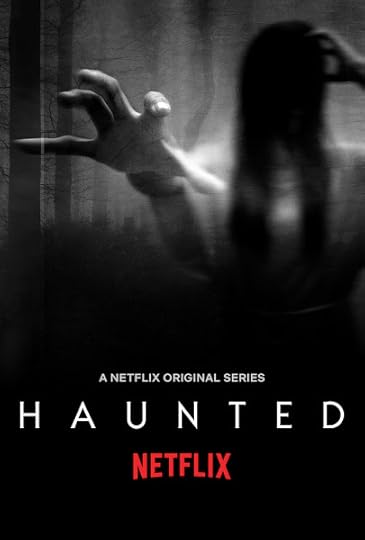 8 - Haunted (2018- )
8 - Haunted (2018- )I never felt that the format the producers chose for Haunted worked very well. Friends and relatives of the people telling the story would sit in a circle around them, reacting to the events as they were recounted (and simultaneously reconstructed on screen for the benefit of viewers).
Unfortunately, this had a strangely stilted effect, and while it certainly sounds all right in theory, in practice the simiplicity of a talking head being interviewed directly about their experiences (as in Paranormal Witness, above) is far more effective.
We gave up on it after awhile, as the stories grew increasingly far-fetched. There was a Latin American spin-off which was rather more spirited, but still struggled to surmount this basic formatting issue.
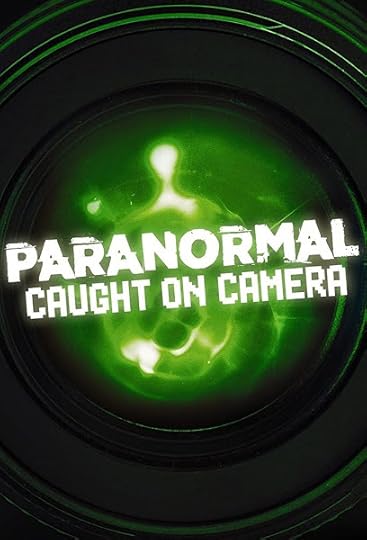 9 - Paranormal Caught on Camera (2019- )
9 - Paranormal Caught on Camera (2019- )Paranormal Caught on Camera can be, at times, mind-numbingly tedious - in particular all the shots of blurry lights moving around in the sky. But it's worth sitting through all that for the truly bizarre things it occasionally presents.
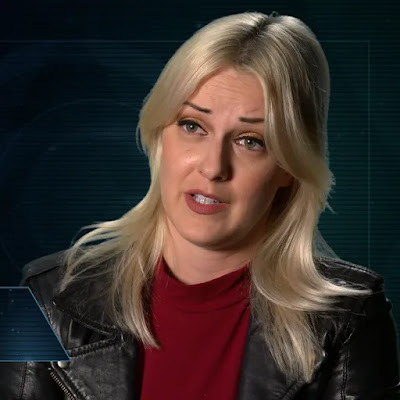 Susan Slaughter (Paranormal Caught on Camera)
Susan Slaughter (Paranormal Caught on Camera)My own favourite among the various half-psychic investigator, half standup comic commentators they feature to contextualise each piece of grainy film would have to be the redoubtable . It doesn't matter what they show - strange scissor-people without bodies, shadow figures, were-creatures of various varieties - she's seen them all already: had lunch with them in some cases.
I see from her IMDb profile that as well as being a "paranormal expert, she openly identifies as a Witch ... Susan is well known for her duality in both acting and the paranormal." All power to her, imho.
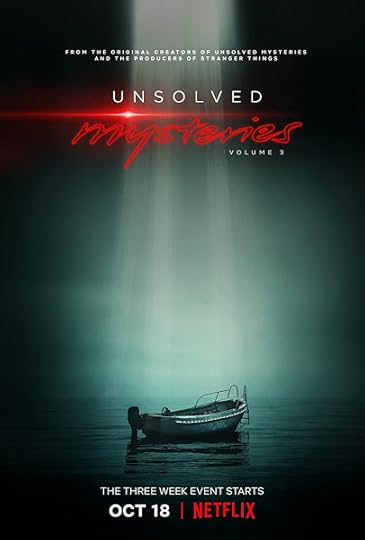 10 - Unsolved Mysteries (2020- )
10 - Unsolved Mysteries (2020- )Unsolved Mysteries mostly specialises in missing-person cases and gruesome, unsolved murders. Every now and then they include an episode on more supernatural matters, however, including a truly wonderful piece, "Paranormal Rangers", on the Navaho Reservation policemen whose job it is to investigate any and all unexplained sightings in the immense stretch of territory under their jurisdiction.
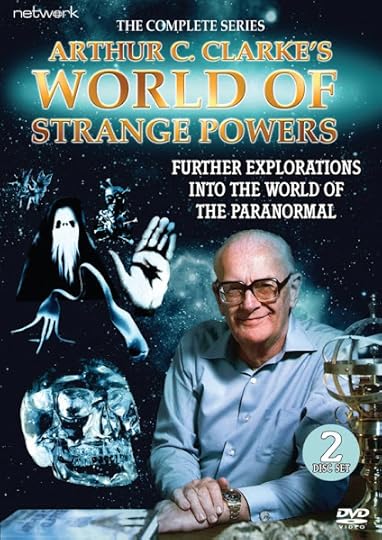 11 - Arthur C. Clarke's World of Strange Powers (1985)
11 - Arthur C. Clarke's World of Strange Powers (1985)So, in conclusion, turning back to the UK, we come to the great-grandaddy of them all, Arthur C. Clarke's Mysterious World (13 episodes, 1980), and its sequels Arthur C. Clarke's World of Strange Powers (13 episodes, 1985), and Arthur C. Clarke's Mysterious World (26 episodes, 1994).
What can I say about this? It's clearly a masterpiece of the genre, though it could be argued that the longer it went on the less it remained in tune with the sceptical reductionism of Clarke himself and more it seemed informed by the wide-eyed credulity of the TV producers. But (as I explained in my previous blogpost on Clarke) that's of small concern to me.
It gave rise to a series of illustrated coffee-table books, as well as various sets of videos and DVDs (most of which I own): Books:
John Fairley & Simon Welfare. Arthur C. Clarke’s Mysterious World (London: Collins, 1980)John Fairley & Simon Welfare. Arthur C. Clarke’s World of Strange Powers (London: Collins, 1984)John Fairley & Simon Welfare. Arthur C. Clarke’s Chronicles of the Strange & Mysterious (London: Guild Publishing, 1987)John Fairley & Simon Welfare. Arthur C. Clarke’s A-Z of Mysteries: From Atlantis to Zombies. Foreword by Arthur C. Clarke (London: Book Club Associates, 1993)Simon Welfare & John Fairley. Arthur C. Clarke's Mysteries (London: Collins, 1998)
DVDs:
Arthur C. Clarke’s Mysterious World, narrated by Gordon Honeycombe, prod. John Fanshawe & John Fairley, dir. Peter Jones, Michael Weigall & Charles Flynn (UK, 1980). 2-DVD set.Arthur C. Clarke’s World of Strange Powers, narrated by Anna Ford, prod. John Fairley, dir. Peter Jones, Michael Weigall & Charles Flynn (UK, 1985). 2-DVD set.Arthur C. Clarke’s Mysterious Universe, narrated by Carol Vorderman, prod. John Fairley, dir. Peter Jones, Michael Weigall & Charles Flynn (UK, 1994). 4-DVD set.Not many of the episodes were specifically about ghosts, but those that were were models of the investigative genre: well-researched, well-constructed, and profoundly atmospheric. It's definitely worth watching again, if you ever have the good fortune to come across it.
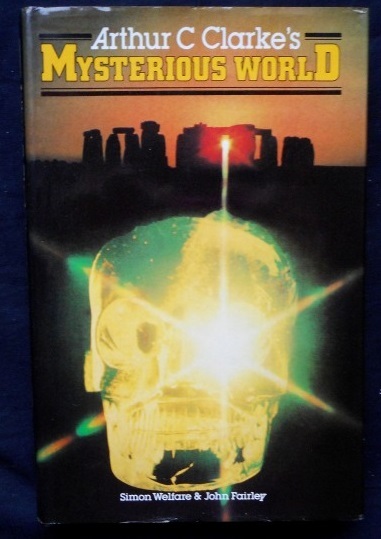 Simon Welfare & John Fairley: Arthur C. Clarke's Mysterious World (1980)
Simon Welfare & John Fairley: Arthur C. Clarke's Mysterious World (1980)•
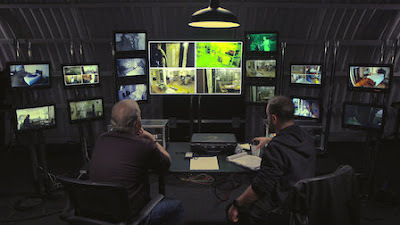 28 Days Haunted: The Control Room, with hosts Aaron Sagers & Tony Spera (2022)
28 Days Haunted: The Control Room, with hosts Aaron Sagers & Tony Spera (2022)So what are the principal hallmarks of the genre? Let's see:
a complete lack of verifiable information or resultsdeliberately poor picture and sound qualityendless credulity in the face of flimsy conjecturesconstant reliance on weird and pointless - mostly electronic - gadgetsfrequent bombastic assertions of close knowledge of the Other Side and its ways
And yet, and yet, every now and then one gets the slightest glimmer that there might actually be something going on in some of the places these investigators get themselves into. It's that, I suppose, that keeps me watching.
To adopt a more (Shirley) Jacksonian perspective, however, even the most sceptical viewer would have to admit that some of the personalities on display in 28 Days Haunted really were quite priceless:
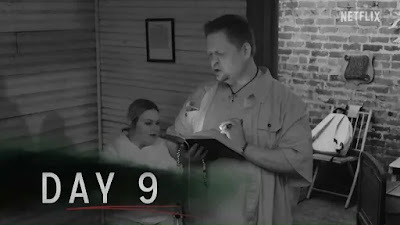 28 Days Haunted: Madison Dry Goods (Madison, North Carolina)
28 Days Haunted: Madison Dry Goods (Madison, North Carolina)l-to-r: Brandy Miller & Jereme Leonard
Jereme [sic.] and Brandy, shut inside a Dry Goods store in Madison, North Carolina, were particularly good - he a loud, useless, fraidy-cat, who, despite his claims to be a 'Cajun Demonologist,' actually managed to get himself possessed by one of the entities; she a dedicated nag who could go on and one about the same topics for hours in an endless, terrifying loop (as the onscreen time-count recorded so dispassionately).
The most frightening thing about their stay, however, was not so much the building they were trapped in as the weirdly deserted town surrounding it. Cars would occasionally pass, but not a single person could be seen on the streets or in the surrounding shops and offices. It might as well have been Innsmouth, Massachusetts, rather than Madison, North Carolina.
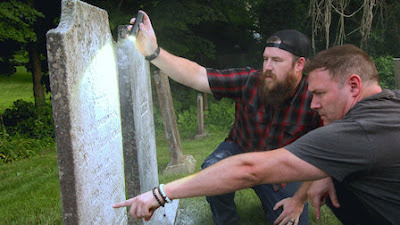 28 Days Haunted: Captain Grant’s Inn (Preston, Connecticut)
28 Days Haunted: Captain Grant’s Inn (Preston, Connecticut)l-to-r: Nick Simons & Sean Austin
Then there were those three tomfools, Sean, Nick and Aaron, staying in Captain Grant’s Inn in Preston, Connecticut. Sean, the self-professed psychic was locked in a constant battle with sceptical technician Nick. The latter presumed to doubt the validity of a message written on a steamed-up mirror in the bathroom. The more Sean denied having written it himself, the guiltier he looked.
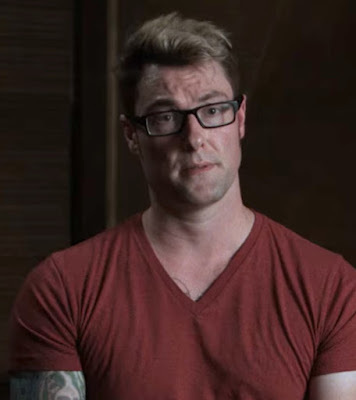 Aaron Thompson
Aaron ThompsonHapless would-be peacemaker Aaron felt increasingly overlooked and undervalued by the other two as the investigation progressed. In W. H. Auden's phrase, he sank "into a more terrible calm" as their seemingly interminable ordeal continued.
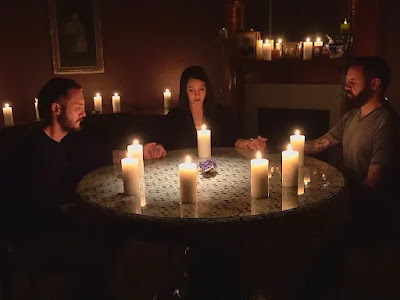 28 Days Haunted: Lumber Baron Inn (Denver, Colorado)
28 Days Haunted: Lumber Baron Inn (Denver, Colorado)l-to-r: Ray Causey, Amy Parks, & Shane Pittman
Somewhat surprisingly, Shane, Ray and Amy, at the Lumber Baron Inn in Denver, Colorado, might qualify as the least harmonious group of all. The brutal way in which the two men conspired to bully psychic sensitive Amy into dangerous and uncomfortable situations had to be seen to be believed. She made it clear that she would not channel spirits through 'mirror-portals' (whatever those are). Her counter-offer of using candles to establish contact was accepted reluctantly by the thuggish pair.
That is, until Shane managed, fortuitously, to resuscitate his own psychic abilities as a result of immersing himself in a tin bath under a tent out in the grounds. Ray, by contrast, seemed to do little except complain, foment mutiny, and (we're reliably informed) do most of the cooking.
Riveting though 28 Days Haunted was at times, it was hard to persuade ourselves that there was much more to it than some kind of unholy cross between Survivor and The Amazing Race with a few bits of hokey psychic folklore thrown in.
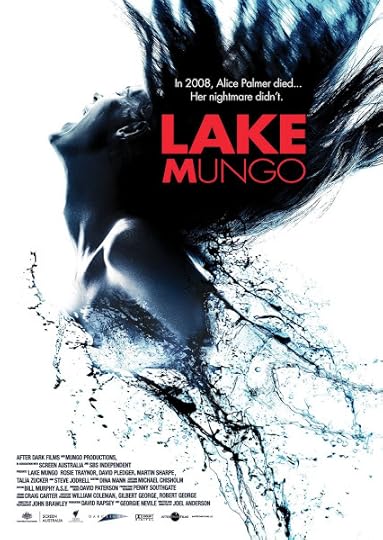 Joel Anderson, dir. & writ.: Lake Mungo (2008)
Joel Anderson, dir. & writ.: Lake Mungo (2008)All in all, none of these programmes can really compare with the sheer sense of strangeness and haunting loss achieved by Australian filmmaker Joel Anderson in his classic faux-documentary Lake Mungo. If only some real film footage could be found to rival the brilliantly executed camera trickery he beguiles us with so impeccably!
•
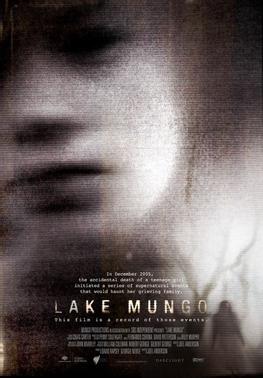 Lake Mungo
Lake Mungo
Published on November 20, 2022 13:36
November 5, 2022
James Family Values
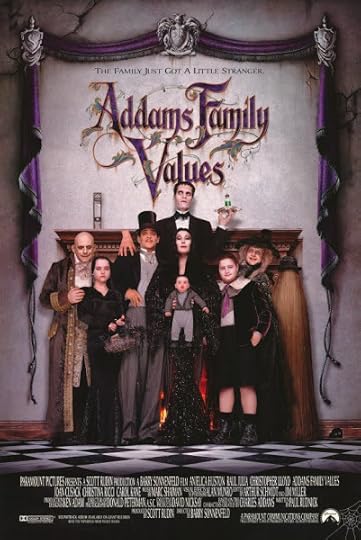 Barry Sonnenfeld, dir.: Addams Family Values (1993)
Barry Sonnenfeld, dir.: Addams Family Values (1993)
June 17, 1905
Dear Mr. Johnson:
Just back from three months in Europe, I find your letter of May 16th awaiting me, with the very flattering news of my election into the Academy of Arts and Letters. I own that this reply gives me terrible searchings of the heart.
On the one hand the lust of distinction and the craving to be yoked in one Social body with so many illustrious names tempt me to say “yes.” On the other, bidding me say “no,” there is my life‐long practice of not letting my name figure where there is not some definite work doing in which I am willing to bear a share; and there is my life‐long professional habit of preaching against the world and its vanities.
I am not informed that this Academy has any very definite work cut out for it of the sort in which I could bear a useful part; and it suggests tant soit peu the notion of an organization for the mere purpose of distinguishing certain individuals (with their own connivance) and enabling them to say to the world at large “we are in and you are out.”
Ought a preacher against vanities to succumb to such a lure at the very first call? Ought he not rather to “refrain, renounce, abstain,” even tho it seem a sour and ungenial act? On the whole it seems to me that for a philosopher with my pretensions to austerity and righteousness, the only consistent course is to give up this particular vanity, and treat myself as unworthy of the honour, which I assuredly am. And I am the more encouraged to this course by the fact that my younger and shallower and vainer brother is already in the Academy, and that if I were there too, the other families represented might think the James influence too rank and strong.
Let me go, then, I pray you, “release me and restore me to the ground.” If you knew how greatly against the grain these duty‐inspired lines are written, you would not deem me unfriendly or ungenial, but only a little cracked.
By the same token, I think that I ought to resign from the Institute (in which I have played so inactive a part) which act I herewith also per form.
Believe me, dear Mr. Johnson, with longing regret,
heroically yours,
WILLIAM JAMES
Cambridge, Mass.
- Quoted from Letters to the Editor. The New York Times (April 16, 1972)
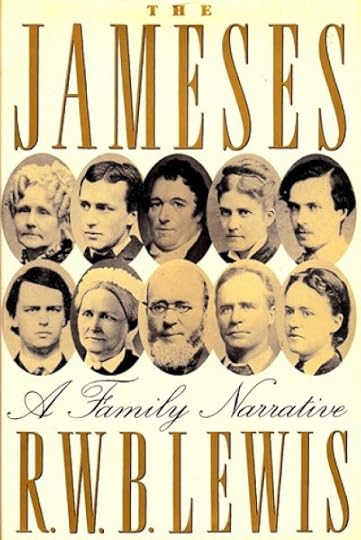
R. W. B. Lewis: The Jameses: A Family Narrative (1991)
I think you'll agree that this is quite an odd letter to send to someone inviting you to join their organisation - all the more so given that William James had already agreed to be one of the founding members of the American Institute of Arts and Letters some years before.
What can have motivated it? Was it really an expression of humility on his part, or was it (as Leon Edel, in his immense, magisterial five-volume biography of Henry James (1953-1972), suggests) because his "younger and shallower and vainer brother" was already in the Academy - i.e. had been asked first.
It's important to stress that William James was 63 at the time, with a worldwide reputation as one of the most influential psychologists and philosophers then living. His "younger and shallower and vainer brother", Henry, was 62, and already seen as a potential candidate for the Nobel Prize in Literature, for which he was nominated in 1911, 1912, and 1916.
William himself, in context, characterises his own reaction to this insult - an Academy daring to offer priority to his younger brother - as "a bit cracked." His choice of words in describing the possible "James influence" on that institution as "too rank and strong" is also strangely visceral - as if there were something lurking in his family background which literally sickened him.
I've written elsewhere about the mountain of books by and about Henry James collected by me over the years. Which is yet another reason for being surprised at Williams' characterisation of this "Master of nuance and scruple" (in W. H. Auden's phrase), this "great and talkative man," as a "younger and shallower and vainer brother." Vain, yes, perhaps - younger, definitely - but shallow? The mind boggles.
The family tree of the Jameses was more or less as follows ("A shilling life will give you all the facts" - Auden again):
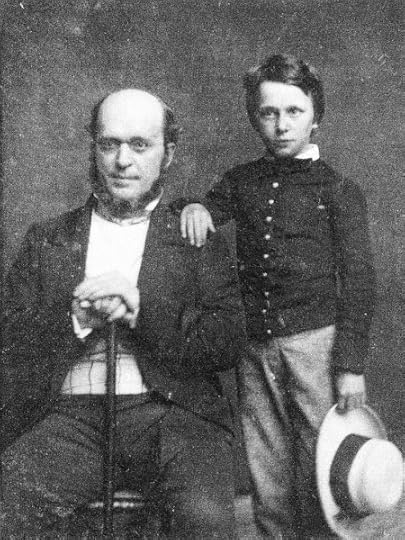 Matthew Brady: Henry James Sr. and Henry James Jr. (1854)
Matthew Brady: Henry James Sr. and Henry James Jr. (1854)On July 28, 1840, [Henry James Sr. (1811–1882), an American theologican and Swedenborgian mystic], was married to Mary Robertson Walsh (1810–1882), the sister of a fellow Princeton seminarian, by the mayor of New York ... The couple lived in New York, and together had five children:
William James (1842–1910), a philosopher and psychologist, and the first educator to offer a psychology course in the United States.Henry James Jr. (1843–1916), an author considered to be among the greatest novelists in the English language ...Garth Wilkinson "Wilkie" James (1845–1883) ...Robertson "Bob" James (1846–1910) ...Alice James (1848–1892), a writer and teacher who became well known for her diary published posthumously in 1934 ...- Wikipedia: Henry James Sr.
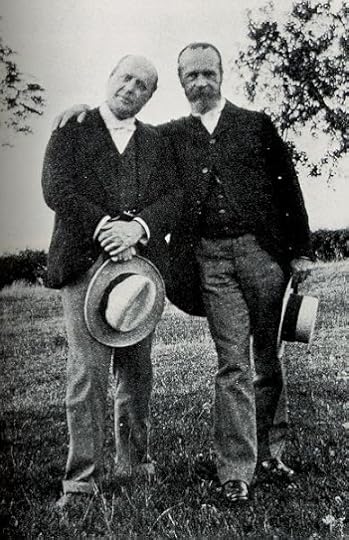 Henry & William James
Henry & William James[It could almost pass for a picture of Sherlock and Mycroft Holmes, couldn't it? The article I borrowed this image from is even entitled "Henry James’s Smarter Older Brother." And is it just me, or is there something a little territorial in the way William is trying to tower over his brother, while Henry obligingly tilts his head to try and look as small as possible? It's like two cats establishing precedence when they meet in the backyard.]I guess what interests me most about the James family, though, is not so much the primeval struggle for dominance between the two eldest brothers - it's a psychological commonplace that a second child tries to distinguish him or her self as much as possible from their older sibling. No, it's how that pattern affects the other children that concerns me.
And, yes, I am the youngest in a family of four children: my eldest brother embodies scientific method and logic; the next brother down is completely dedicated to creative writing and the exercise of the existential will; the next down, my sister, was an invalid a little like Alice James, very gifted artistically but unable to deal with the stresses of the workaday world.
So what was left for me, the youngest child? The necessity of avoiding all of these prior choices - in part, or wholly - in order to construct my own independent existence. And how successful have I been? Well, I'm not really in a position to judge: but all I can say is that I believe that your place in the succession, from first to last, has a massive influence on your own individual process of individuation, especially in families with a very dominant ethos: like the Jameses, or the Manns, or (for that matter) the Rosses.
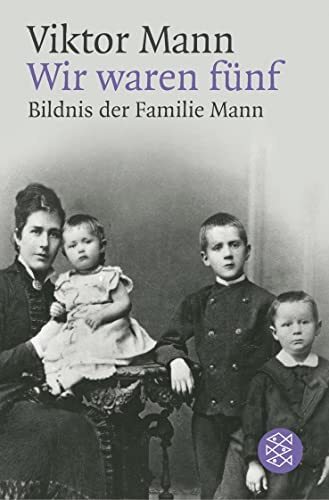 Viktor Mann: Wir waren fünf. Bildnis der Familie Mann [There were five of us: A Mann Family Album] (1949)
Viktor Mann: Wir waren fünf. Bildnis der Familie Mann [There were five of us: A Mann Family Album] (1949)Thomas Johann Heinrich Mann (1840–1891), Lübeck merchant and senator, married Júlia da Silva Bruhns (1851–1923), a German-Brazilian writer. Together they had five children:
[Luiz] Heinrich Mann (1871–1950), author, president of the fine poetry division of the Prussian Academy of Arts ...[Paul] Thomas Mann (1875–1955), author, Nobel Prize for Literature laureate in 1929 ...Julia Elisabeth Therese ['Lula'] Mann (1877–1927), married Josef Löhr (1862–1922), banker. She committed suicide by hanging herself at the age of 50.Carla [Augusta Olga Maria] Mann (1881–1910), actress. She committed suicide by taking poison at the age of 29.Karl Viktor Mann (1890–1949), economist, married Magdalena Nelly Kilian (1895–1962).- Wikipedia: The Mann Family
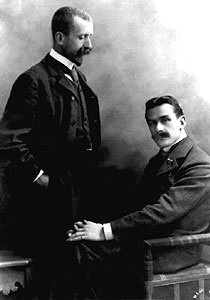 Heinrich & Thomas Mann
Heinrich & Thomas Mann[In this picture, taken around 1902, Heinrich seems still to be trying to assert dominance over Thomas. He was, after all, a well-known writer and cultural figure by this time. He'd already published a number of books. Thomas, by contrast, had only published one novel, but it was Buddenbrooks, a massively influential work which would eventually earn him the Nobel Prize. Is he already conscious, here, of biding his time?]You see what I mean about the possible perilous effects of family dynamics? First Carla, then Lula, both sisters, both suicides. Carla was conscious that her acting career was not going as she'd planned: she had little hope left of rivalling her two elder brothers. Whatever miseries drove her to the final act, it cast a long shadow over the whole family. And, then, of course, Lula followed her example seventeen years later.
Thomas Mann's eldest son, Klaus, another writer, who'd striven all his life to get out from under his father's long shadow, would commit suicide in his turn in 1949. He, too, had lived much of his life in a closer-than-close conspiracy with his older sister Erika, a well-known actress married - for passport reasons - to homosexual poet W. H. Auden.
So what am I trying to say about this succession of family tragedies? Nothing to belittle or attempt to 'explain' them, I assure you. Let's return to the Jameses in an effort to make the point a little clearer.
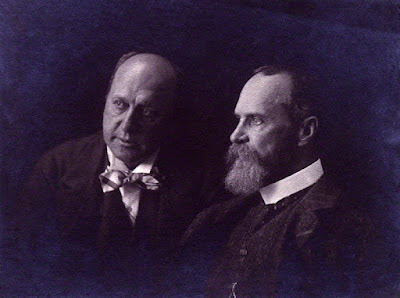 Marie Leon: Henry and William James (early 1900s)
Marie Leon: Henry and William James (early 1900s)William and Henry had their intense rivalry, co-existing with a genuine love for each other, to keep them going. But what of the rest of the family?
You'll note that both brothers were just of an age to be eligible to join up for the American Civil War (1861-65) - William 19, Henry 18 - when it first broke out. Henry bowed out as the result of an 'obscure hurt', a phrase which generations of critics interpreted to mean some kind of debilitating accident in the genital regions: a little like the hero of Hemingway's The Sun Also Rises (1926). It explained a lot.
However, his biographer Leon Edel has deduced from careful sorting of the evidence that it was far more likely to have been a bad back. In any case, it was enough to spare him from joining the forces in any capacity whatsoever. Was it residual guilt over this that explains his trashing of Walt Whitman's poetry book Drum-taps (1865), a record of the older poet's hospital visits and tending of wounded soldiers during the war? Certainly in later life Henry felt deeply ashamed at having so missed the merits of Whitman's work at the time.
William, by contrast, was already at Harvard, where he made sure he had enough to do in the scientific arena to make it impossible for him to find leisure to take note of the war. Nor was he alone in this. As was the case during the Vietnam war, very few university students in the North actually joined the colours. It was mostly those with manual jobs who marched off to war.
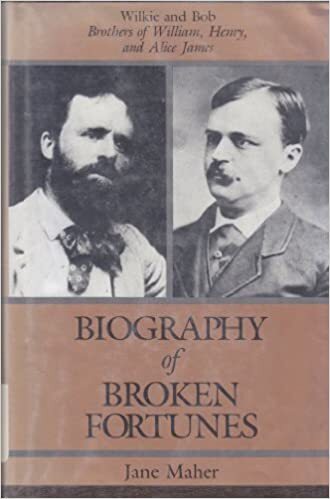 Jane Maher: Biography of Broken Fortunes (1986)
Jane Maher: Biography of Broken Fortunes (1986)It was Wilkie and Bob, their two younger brothers, who actually joined up. In her book Biography of Broken Fortunes: Wilkie and Bob, Brothers of William, Henry, and Alice James, Jane Maher traces the sorry saga of their lives thereafter: their abortive attempts to be accepted on their own terms, their business and other failures. Wilkie went bankrupt, was left out of his father's will, and died at the early age of 38. "Unsuccessful at poetry and painting, Bob, an alcoholic with a violent temper, spent many years in asylums, and died at 63, not long before his brother William," as her blurb has it.
But that's not really the whole story. It's important to note here that both brothers were legitimate war heroes, men of honour and principle, and that many of their subsequent difficulties ought to be attributed to post-traumatic stress. Both volunteered to serve as officers in Massachusetts' newly-formed Black regiments. As Wilkie put it in a speech to Union Veterans many years later:
When I went to war I was a boy of 17 years of age, the son of parents devoted to the cause of the Union and the abolition of slavery. I had been brought up in the belief that slavery was a monstrous wrong, its destruction worthy of a man’s best efforts, even unto the laying down of life.Wilkie subsequently took part in the heroic (if misguided) Union assault on Battery Wagner in 1863 - the subject of the 1989 civil war film Glory - and was only a few steps behind Colonel Robert Shaw when he died.
Gathering together a knot of men after the suspense of a few seconds, I waved my sword for a further charge toward the living line of fire above us. We had gone then some thirty yards ... Suddenly a shell tore my side. In the frenzy of excitement, it seemed a painless visitation … A still further advance brought us to the second obstruction … The enemy’s fire did not abate for this crossing, and here it was I received my second wound, a canister ball in my foot.He did eventually recover from his wounds, but walked with a limp for the rest of his life.
Bob, too, saw action in the sea islands off coastal South Carolina and Georgia, and nearly died of sunstroke while campaigning in Florida. Little was done by their family after the war to assist them in their transition to civilian life.
When their father decided to buy some land in Florida which he intended to farm with the help of freed slaves, Wilkie was put in charge of the venture. Bob joined him just before local hostility and bad financial conditions put an end to the experiment. They eventually both ended up working for the same railroad in Wisconsin.
Were they failures? In the material sense, perhaps yes. But as Henry remarked (perhaps rather patronisingly?) of Wilkie:
"He is not particularly successful, as success is measured in this country; but he is always rotund and good-natured and delightful."- quoted in Carl Swanson, Milwaukee Independent (2021)As for Bob, his alcoholism gradually estranged him from his family, and:
In 1885 he returned to Concord to become, in the quarter-century remaining to him, an amiable dilettante, painting, writing poetry and endearing himself as a conversationalist of remarkable powers.- Edwin M. Yoder, The Washington Post (1986)Henry James found this brother's conversation, too, "charged with natural life, perception, humor and color ... the equivalent, for fine animation, of William's epistolary prowess."
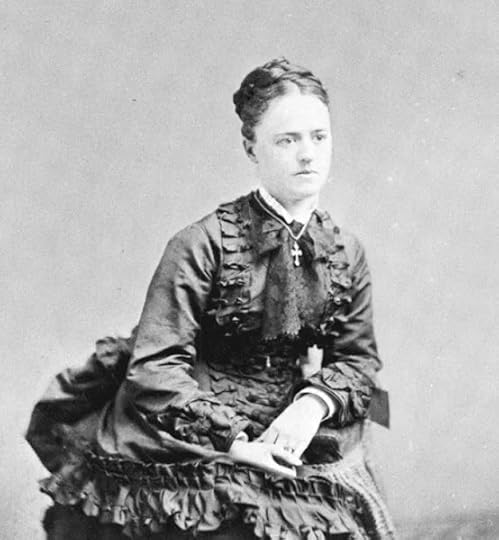 Alice James (1848-1892)
Alice James (1848-1892)What, then, of Alice, the youngest of the James siblings? Well, in many ways she had the oddest destiny of all. She became a professional invalid in the High Victorian manner: like the sofa-bound Signora Neroni in Trollope's Barchester Towers (1857), or (for that matter), the crippled heir of Redclyffe in Charlotte M. Yonge's famous novel.
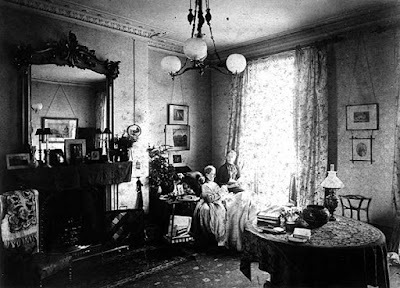 Alice James & Katharine Loring (Leamington Spa, 1890)
Alice James & Katharine Loring (Leamington Spa, 1890)William, the psychologist, was largely unimpressed by her vapours, but empathetic Henry lavished her with attention. It was mainly for that reason that she shifted her residence to Britain after their parents' death. She also wrote an exceptionally subtle and (at times) acerbic diary, which has become a classic in its own right.
Subsequent biographers and critics, Jean Strouse and Susan Sontag among them, have veered between sympathy and impatience with "Alice-as-icon and Alice-as-victim". She did, for a time, succeed in putting herself at the centre of the family discourse, however - which is more than her other two brothers, Wilkie and Bob, ever managed to do.
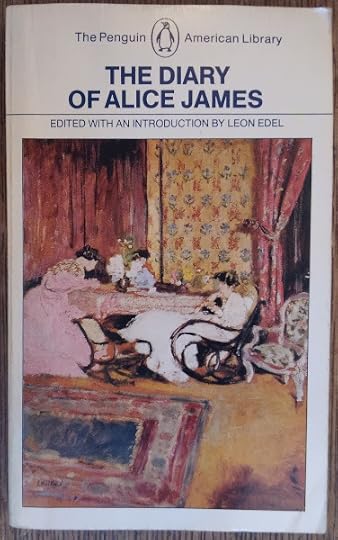 Leon Edel, ed. The Diary of Alice James (1964)
Leon Edel, ed. The Diary of Alice James (1964)•
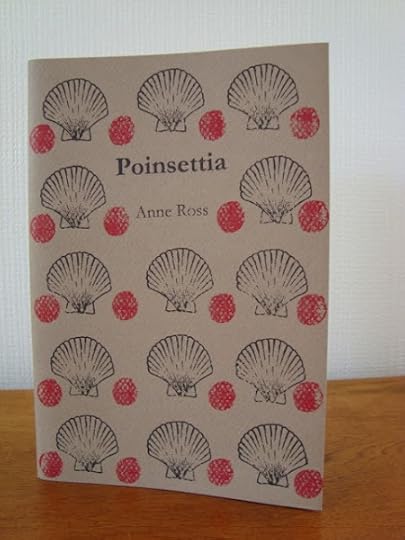 Anne Ross: Poinsettia: A Mermaid's Tale (2013)
Anne Ross: Poinsettia: A Mermaid's Tale (2013)My own sister, Anne Mairi Ross (1961-1991), a gifted writer and artist, took her own life some three decades ago now. The rest of us rage on. Surviving such family conflicts can be a difficult thing to achieve, and it's therefore with more than an Academic interest that I pore over the histories of the Jameses and the Manns - and those of various other creative families, the Bells (Julian and Quentin), the Powyses (John, Theodore, Llewellyn and their eight siblings).
I'm not so naive as to think that such analogues could ever account for the complexities of any human life, but I'm not sure it's really feasible to ignore the similarities in all these Freudian sibling dramas, either.
I'd like to conclude with a poem from my latest book, The Oceanic Feeling. This one comes from the section called "Family plot," which begins with the following epigraph:
These works of fiction, which seem so full of hostility, are none of them really so badly intended … they still preserve, under a slight disguise, the child’s original affection for his parents. The faithlessness and ingratitude are only apparent.
– Sigmund Freud, ‘Family Romances’ (1909)
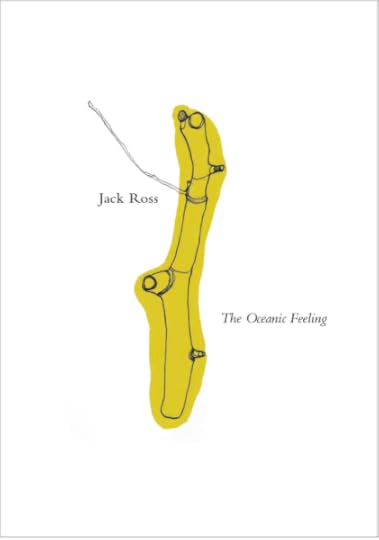 Jack Ross: The Oceanic Feeling (2021)
Jack Ross: The Oceanic Feeling (2021)
Oh br/other!
My eldest brother is flying up
to Auckland
for the weekend
to see my mother
Bronwyn is flying down
to see her sister
in Wellington on Friday
coincidence? hardly
Bronwyn’s younger brother
arrives today
last time we stayed with him
I had a tantrum
and wouldn’t sleep another night
under his roof
I read a thesis recently
on placing far less stress
on Oedipus
the br/other was the term
the author coined
for his new theory
Luke, I am your father!
try your brother
then the sparks will fly
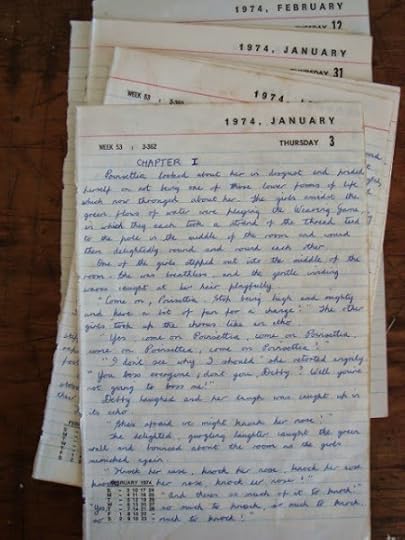 Anne Ross: Poinsettia (2013)
Anne Ross: Poinsettia (2013)•
Published on November 05, 2022 13:14



